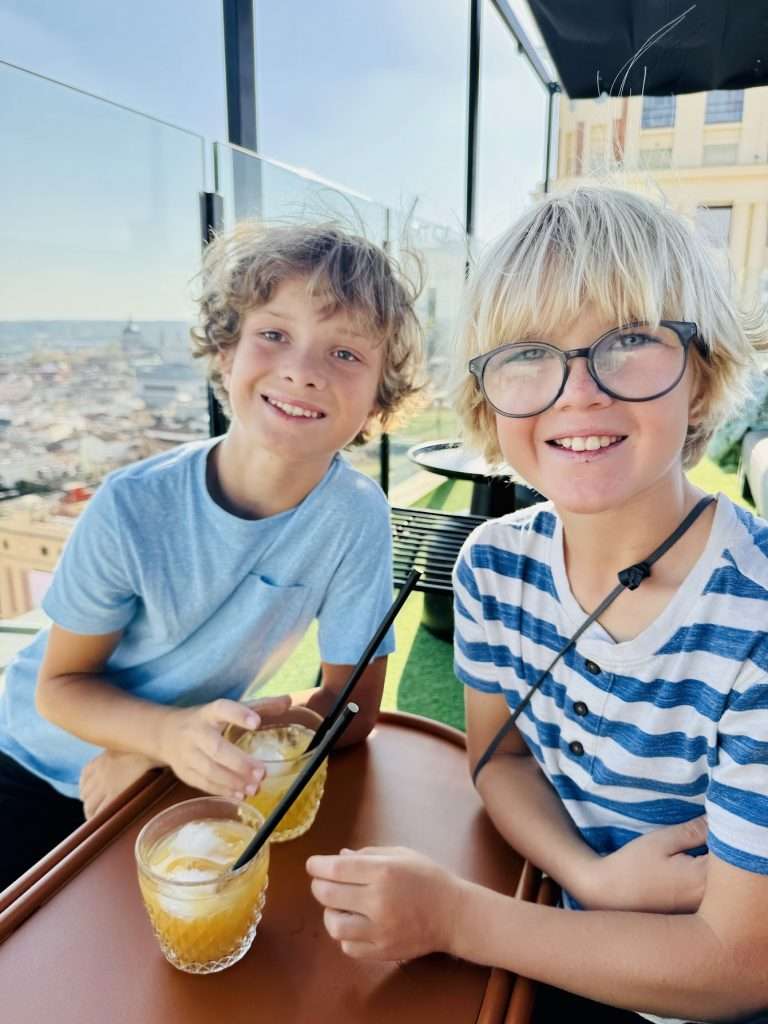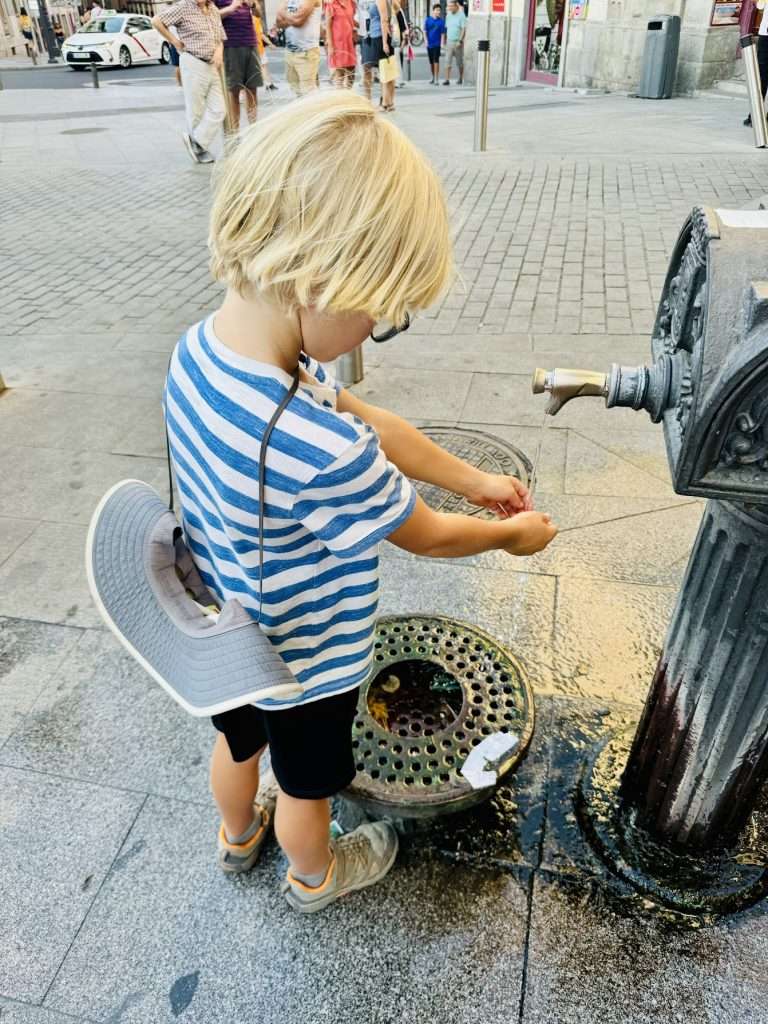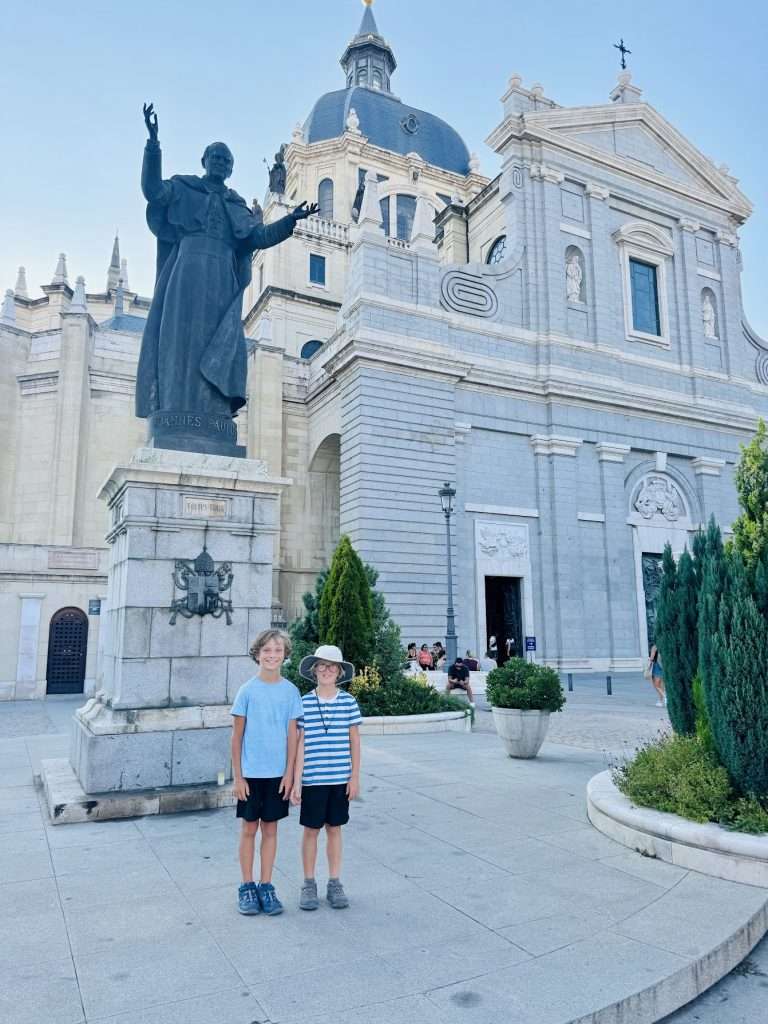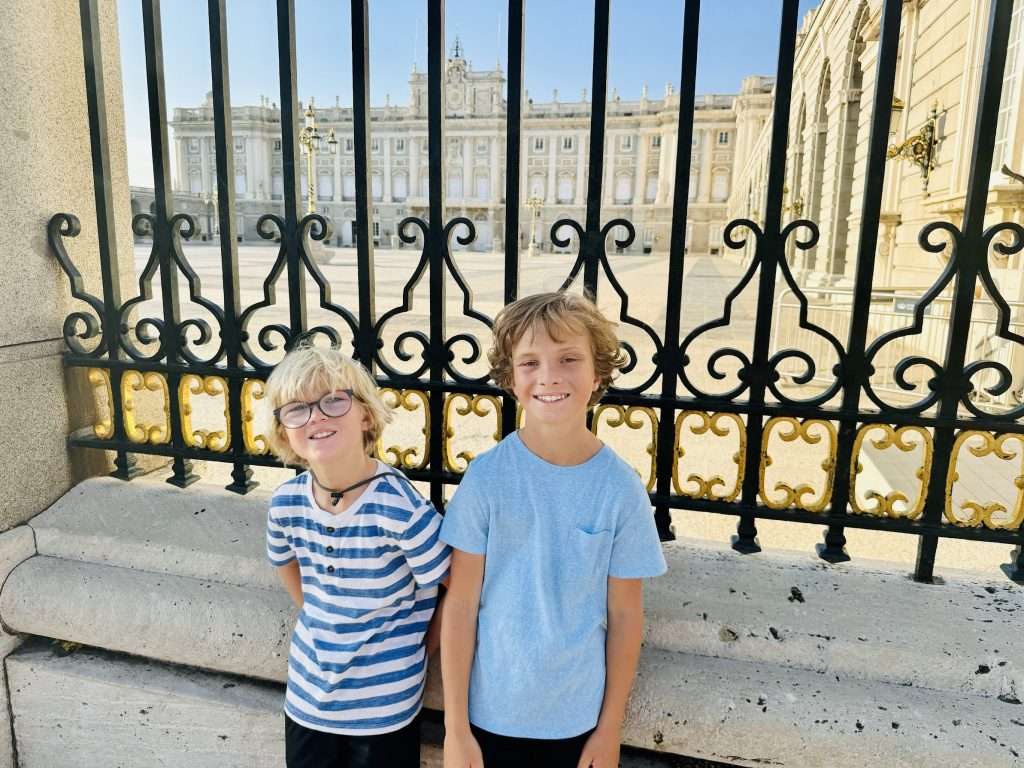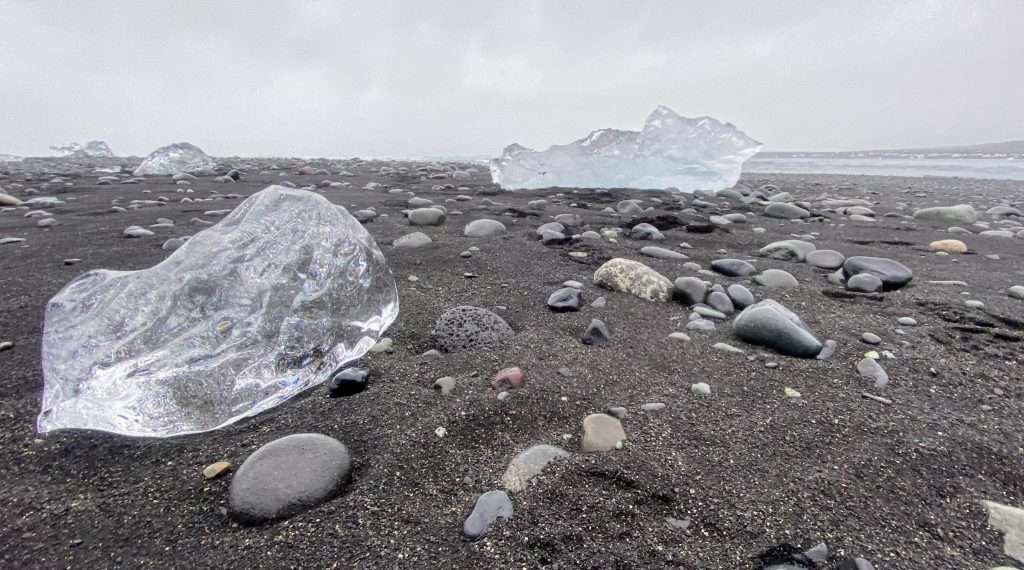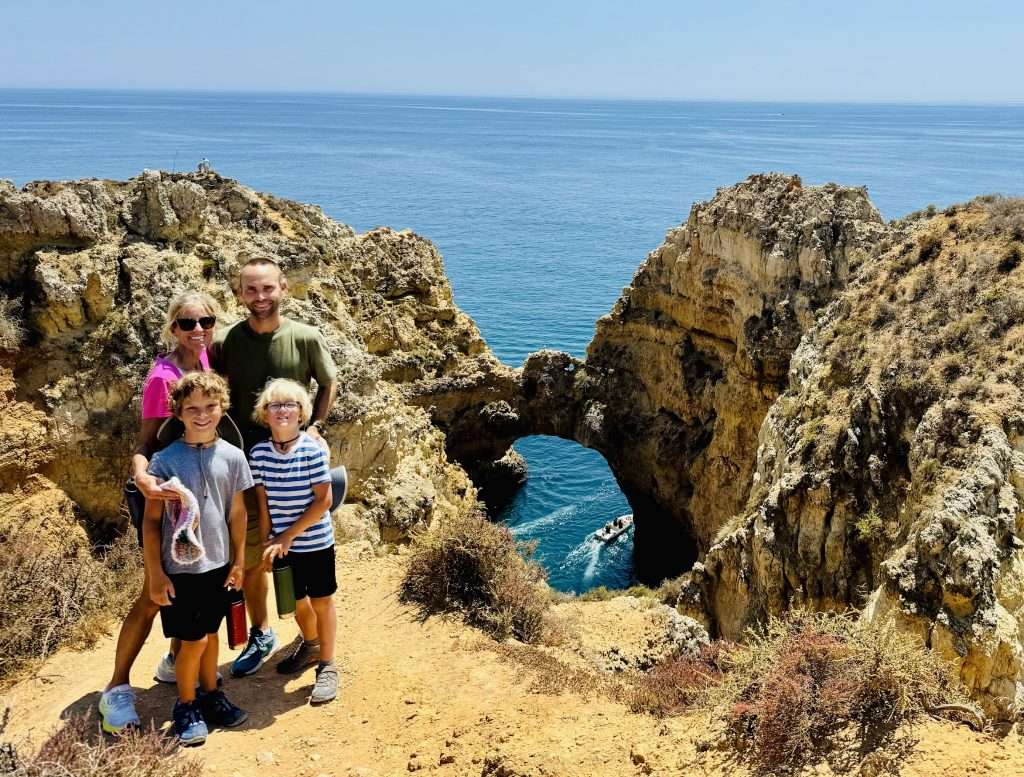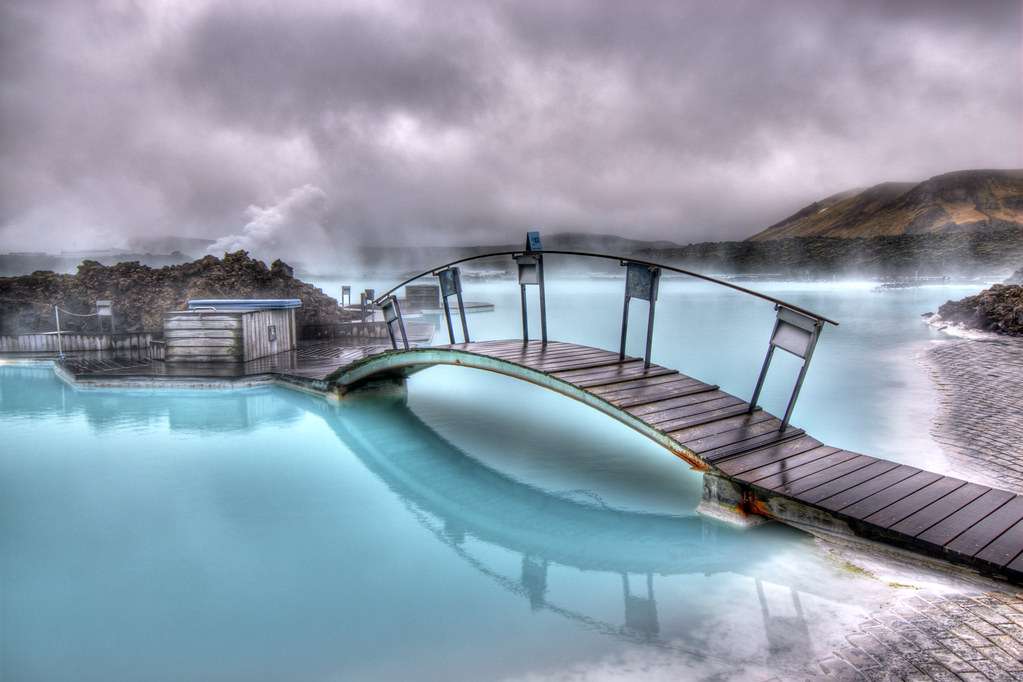
How to Make a Week in Spain Kid-Friendly
May 1, 2025
continued from Unforgettable Adventure in Portugal in Just Three Days!
We left early in the morning to begin our five-hour drive to Estepona, Spain with the plan to stop in Seville for a quick visit. I had read that the parking situation was not optimal in Seville so we chose to leave our rental car at the Parking Saba Torre Seville, a shopping center, and take the bus to Mercado de Triana.
Triana Market, Seville
Triana Market is a food market located in the Triana Bario in Seville. It is located near Isabel II Bridge and was built on the ruins of the Castle of San Jorge. The market has about eighty grocery stores with fruits, fish, sausages as well as bakeries, restaurants and bars. Always adventurous with our food choices, (not) we dined on watermelon, almonds, and berries. Doug, the daredevil of the group, also tried the olives.
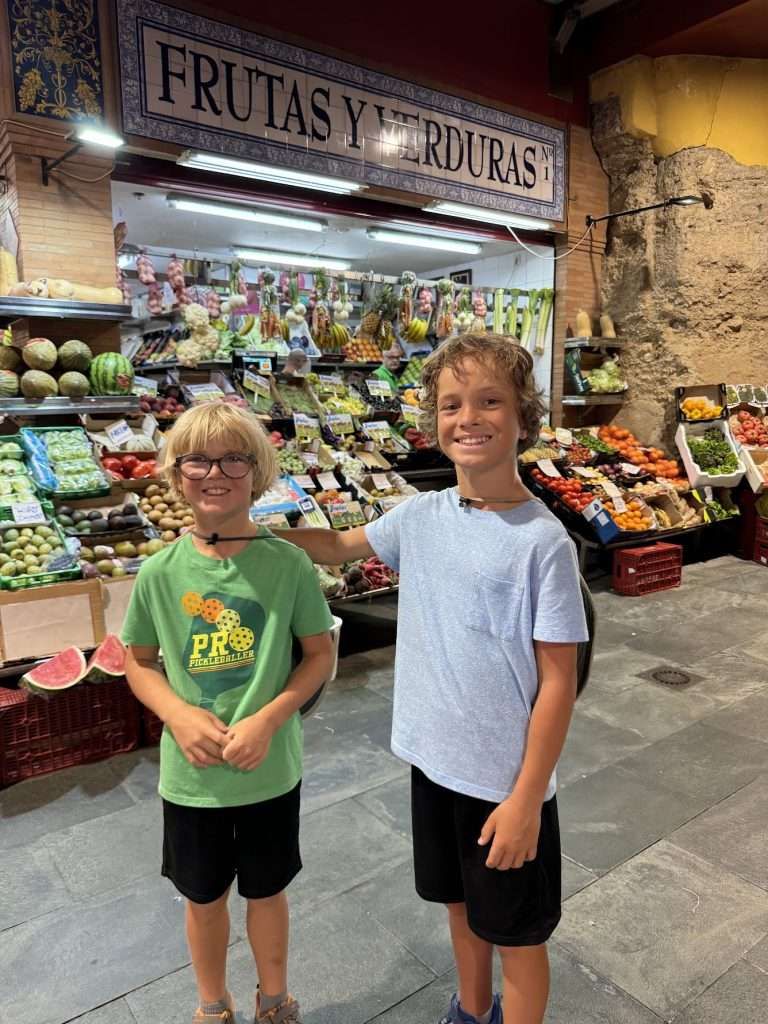

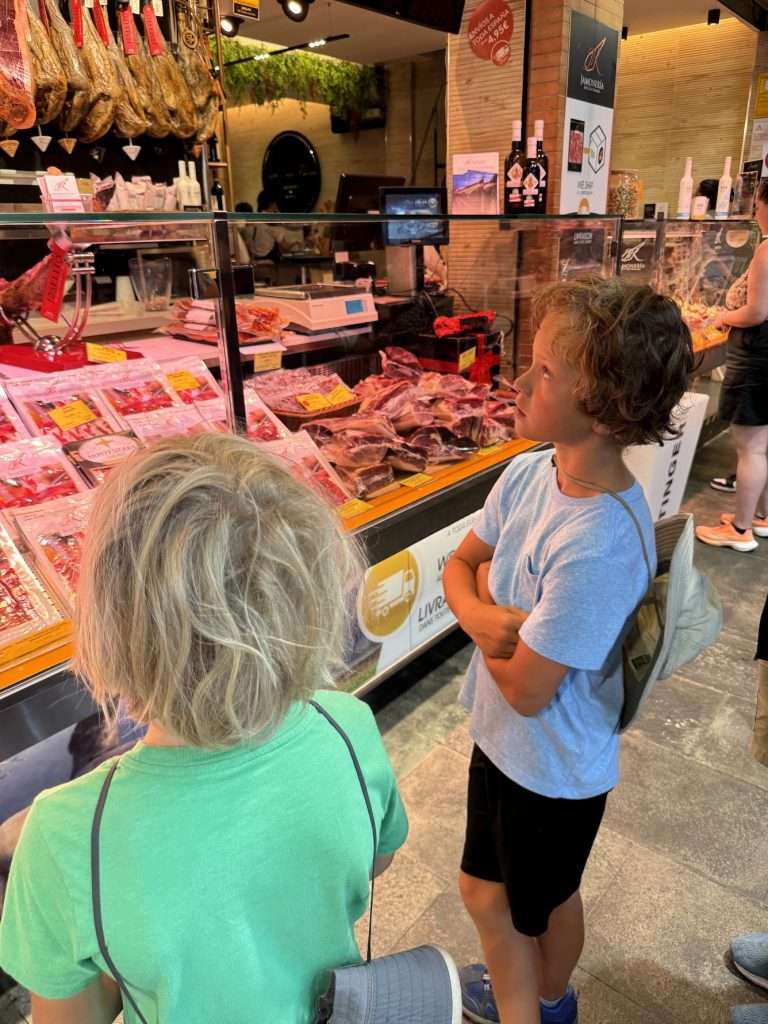
Seville Cathedral
It was a very warm day, but we walked from the market to the Seville Cathedral. Completed in the early 16th century, this cathedral is considered one of the largest churches in the world, and the largest Gothic cathedral. We chose to climb the Giralda tower (the bell tower), which from the ground to the weather vane, is 344 feet. Tickets are required and are ~$18 per adult but free for the kids. The tower does not host a spiral staircase, as you would expect, but instead a sloping corridor that allowed for horses to travel up it. The statue at the top of the tower turns with the wind, which is how it got the name “Giralda”. Giralda = weather vane in Spanish. Greg forced us to stand there until the bells went off at the 15-minute interval. That was uh, loud.
The Tomb of Christopher Columbus is also located in the Seville Cathedral. Columbus’s remains were transferred from Cuba to Seville and now allegedly rest in this tomb. (There is a debate around this because these remains have been transferred so many times that no one really knows where said remains actually are!) Anyway, the tomb is adorned with a bronze coffin, carried by four figures symbolizing the kingdoms of Castile, León, Aragon and Navarre.
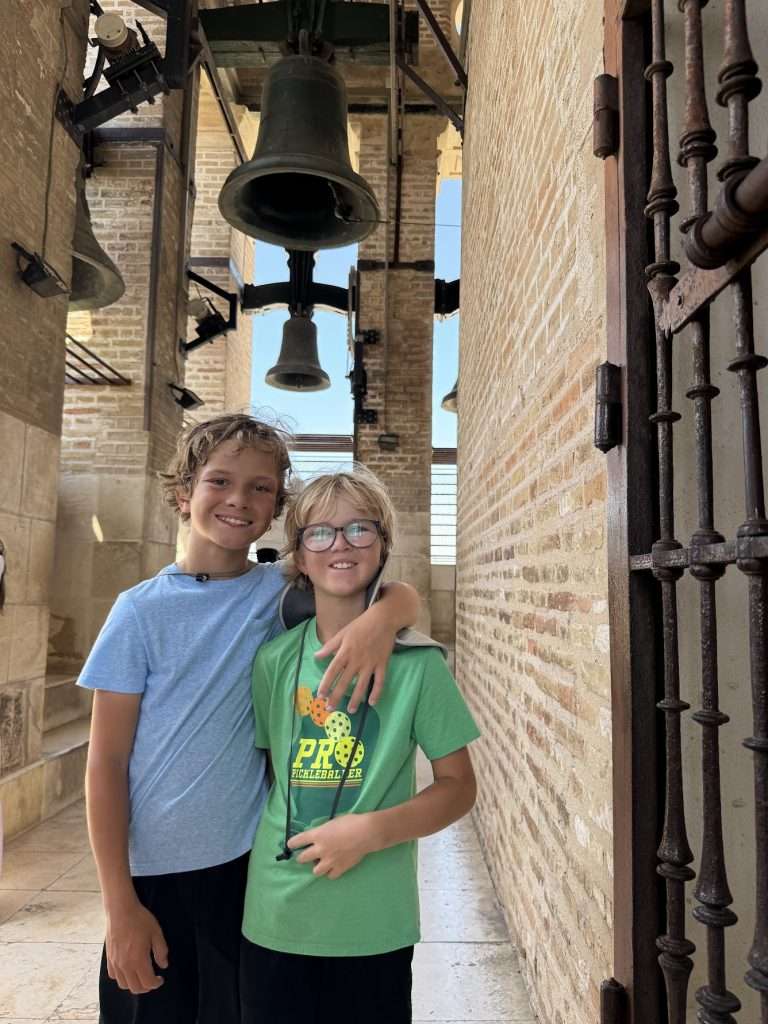
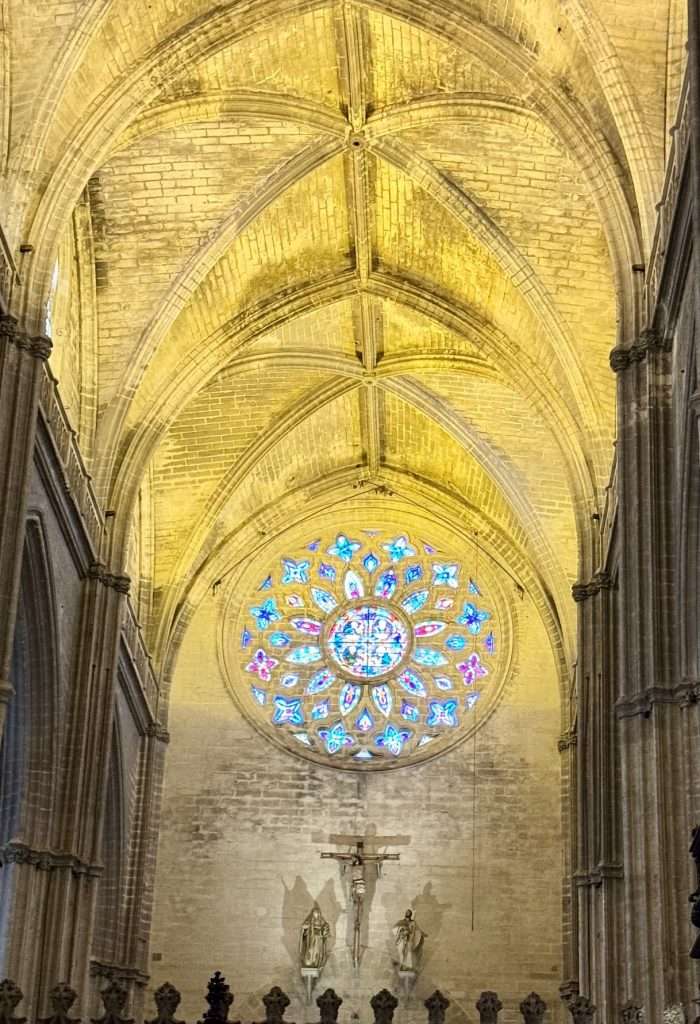
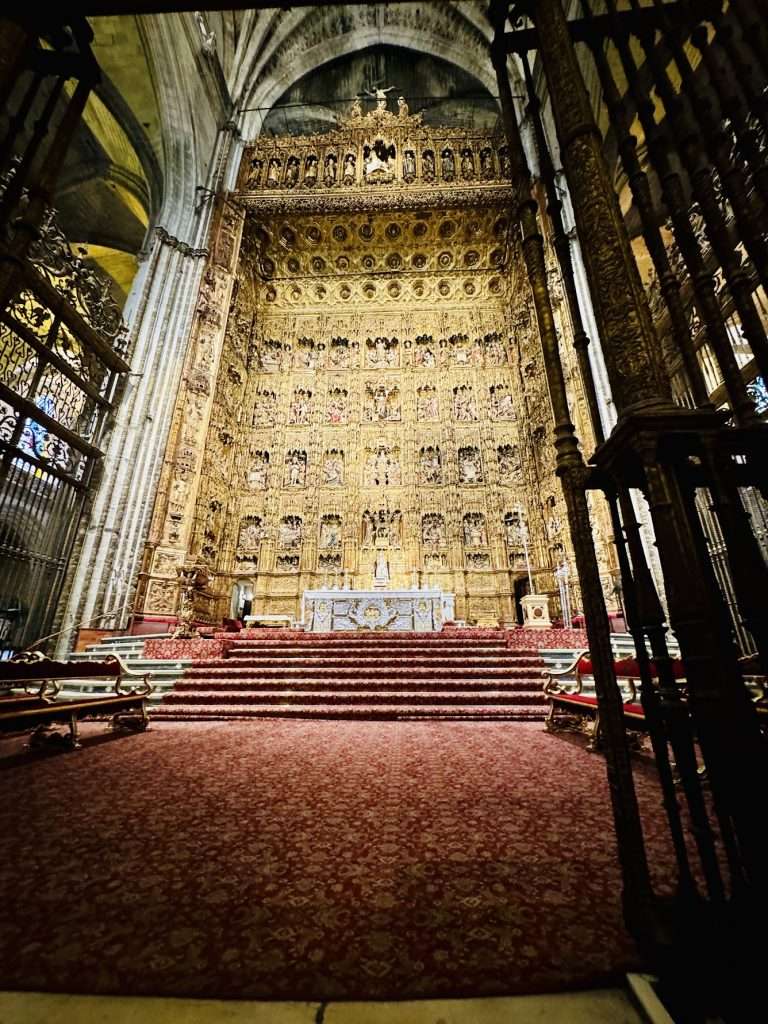


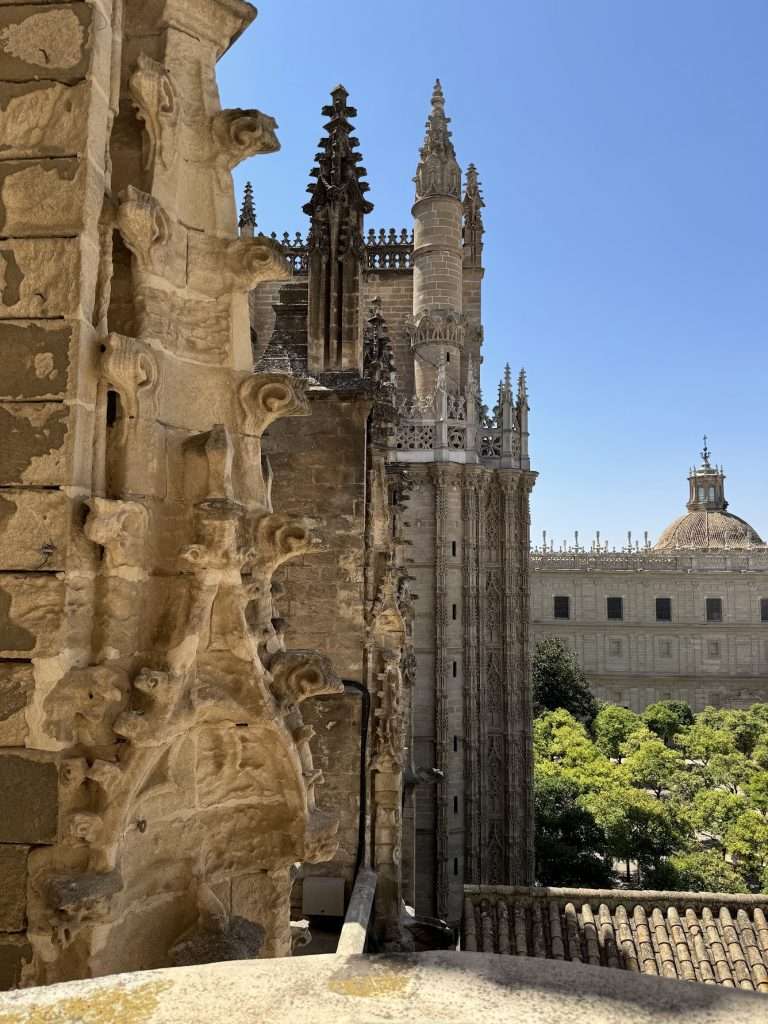
Plaza de España, Seville
Our final stop in Seville before taking the bus back to our car (and some air conditioning!) was the Plaza de Espana, the most famous square in Seville. The Plaza de Espana is shaped like a semi-circle, surrounded by a row of buildings that are, for the most part, used as government institutions. There are fifty-two benches and mosaics of tiles located at the foot of the building on the Spanish square. These represent each of the 52 Spanish provinces. Who knew Spain had that many provinces?!? You can also rent a boat to sale through the canal here, but it was about 150 degrees that afternoon sun (only a slight exaggeration) and were desperately seeking some air conditioning.
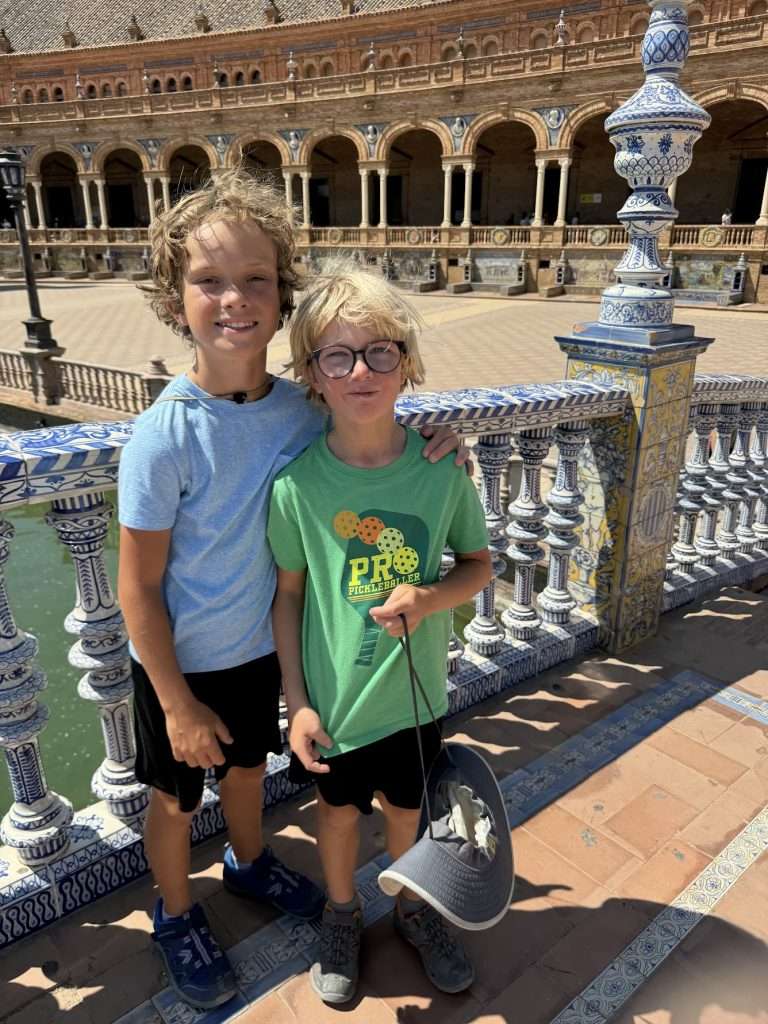
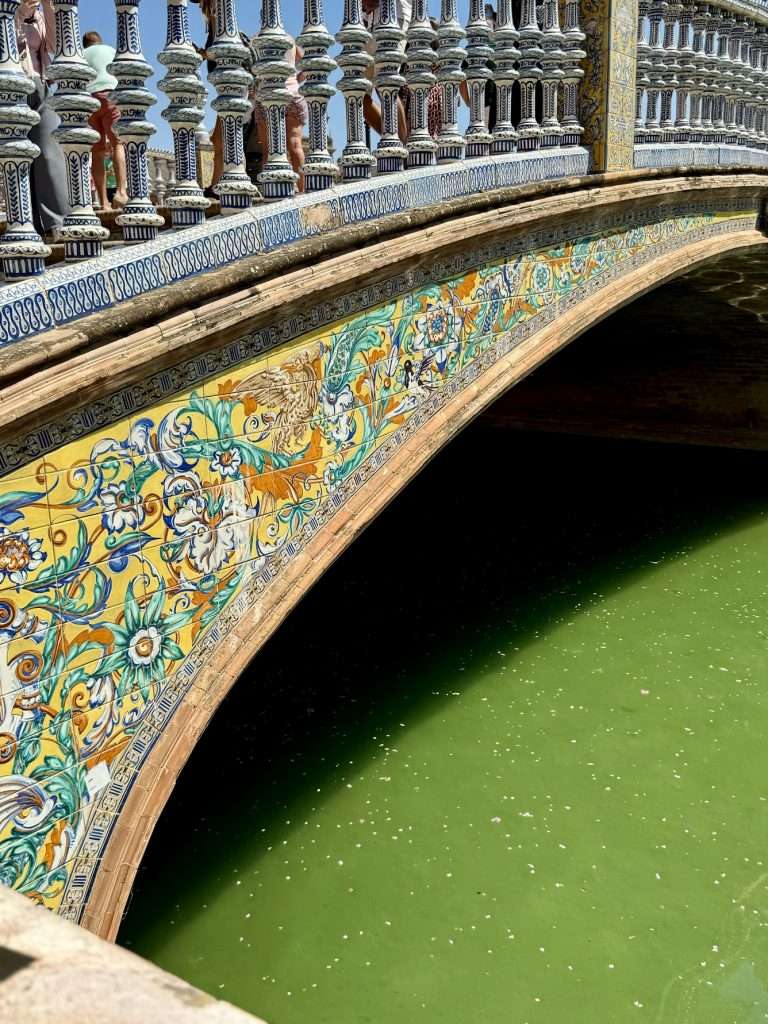

Estepona, Spain
Estepona sits at the southern end of the arc that forms the Costa del Sol. The Costa del Sol is the famed stretch of sunny shore in southernmost Spain. We stayed two nights at the Estepona Holiday Hills, which was an excellent place to stay with no ants, a working air conditioning, and a locked gate. After unpacking our car, we drove into town to find dinner. There were plenty of places to eat but we ultimately decided on Las Gitanillas. While the kids wanted hamburgers, Doug made the executive decision that we would all eat paella, which Roy later termed the “culture meal”.
While at dinner, three out of four of us tried a mussel, and all of us ate at least one shrimp. I’ve only eaten mussels in France and Spain and both times it was out of desperation – I was starving. Anyway, the paella was great until I started to wonder what fish part I was actually eating. As for the kids, Roy declared that he was “never eating another culture meal on this entire trip.” When we returned to our car, we realized the parking garage had shut for the night (I thought Spanish people ate dinner until late in the night!) locking our car inside, so we were forced to walk back to our apartment on a very dark and windy road.


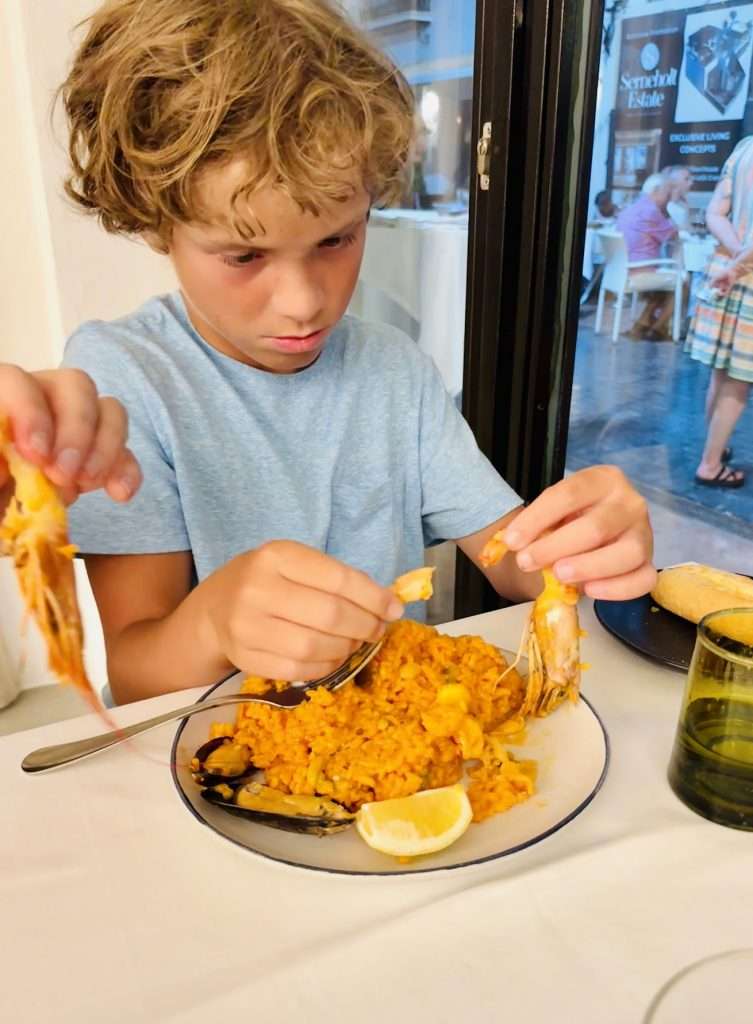
In the morning, Doug and I went for a run and retrieved our rental car before heading to Gibraltar for the day.
Gibraltar
Gibraltar is a British Overseas Territory on Spain’s southern coast. It is dominated by the Rock of Gibraltar, a 426-meter high limestone ridge. Prior to visiting, I assumed that it would be a situation where we would pull off on the side of the road, snap a picture, and continue onward. I was completely wrong.
First, you need to bring your passport to visit. You will be leaving Spain, and passing through immigration to enter into Great Britain. This process takes forever, apparently because there is some issue with an “agreement” that makes the Spaniards want to inflict hardship on the British trying to enter back into Spain, and visa versa. Just how it is as an American trying to cross into Canada. Anyway, we sat in a line of cars for almost two hours before being proceeding into Gibraltar.
Parking was the next challenge. We wanted to hike the Mediterranean Steps to the top of the Rock, but to park we needed British Pounds (not Euros). After a good deal of searching, we eventually found parking at an athletic club. We purchased tickets for the Nature Preserve (which you need in order to do the hike) and while we were honest about the kids ages (9 and 12), the ticket taker didn’t believe they could possibly be that old and so gave Roy (12), the “child ticket”, and Greg (9), a “baby ticket”, which was free. Greg was not amused…but we were!
Hiking the “Med Steps” was pretty incredible. We were fortunate to have timed it right, leaving around 2PM, so that we were not in the blazing sun the entire time. The 330 steps, starting from “Jews Gate” spanned around 1800 meters straight up. While climbing, we stopped to see a handful of whales breaching in the Strait of Magellan. We also made sure to take our pictures with Africa, Morocco we assume, in the background.
At the top of the steps there are 300+ barbary macaques (monkeys). They are moderately aggressive I was told, but that didn’t stop some people from taking pictures with them. We just took pictures of them.
At the highest point of the rock stands the O’Hara’s Battery. This 9.2-inch cannon has a range of 29,000 yards (26km). The peak, or ‘Fortress Gibraltar’, houses 681 guns mounted in 110 batteries and was designed to guard all land, air and sea approaches to Gibraltar. This defense system made Gibraltar truly indomitable.
Before returning to our car, we visited St Michael’s Cave. This cave was long believed to be bottomless, giving birth to the story that the Rock of Gibraltar was linked to Africa by a subterranean passage under the Strait of Gibraltar. St. Michael’s Cave is now used as a unique auditorium for concerts, ballet and drama. It also has a crazy light show inside, but with it closing thirty minutes after we arrived, the staff there was quick to usher us out. They weren’t about to work a minute passed closing time.
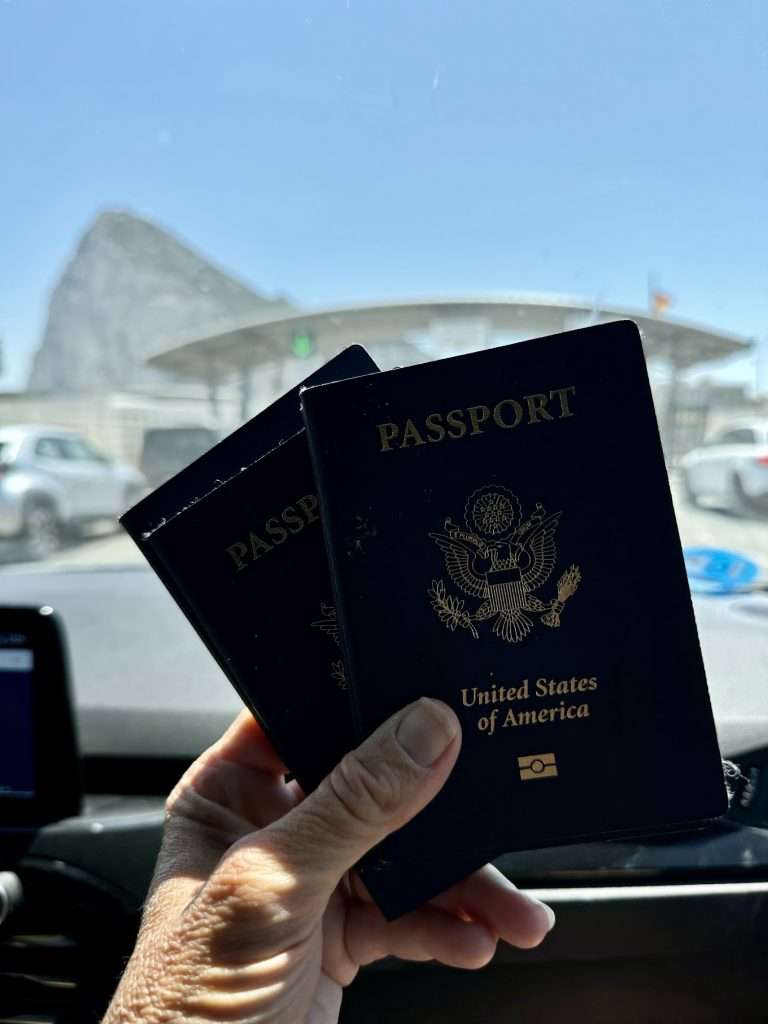
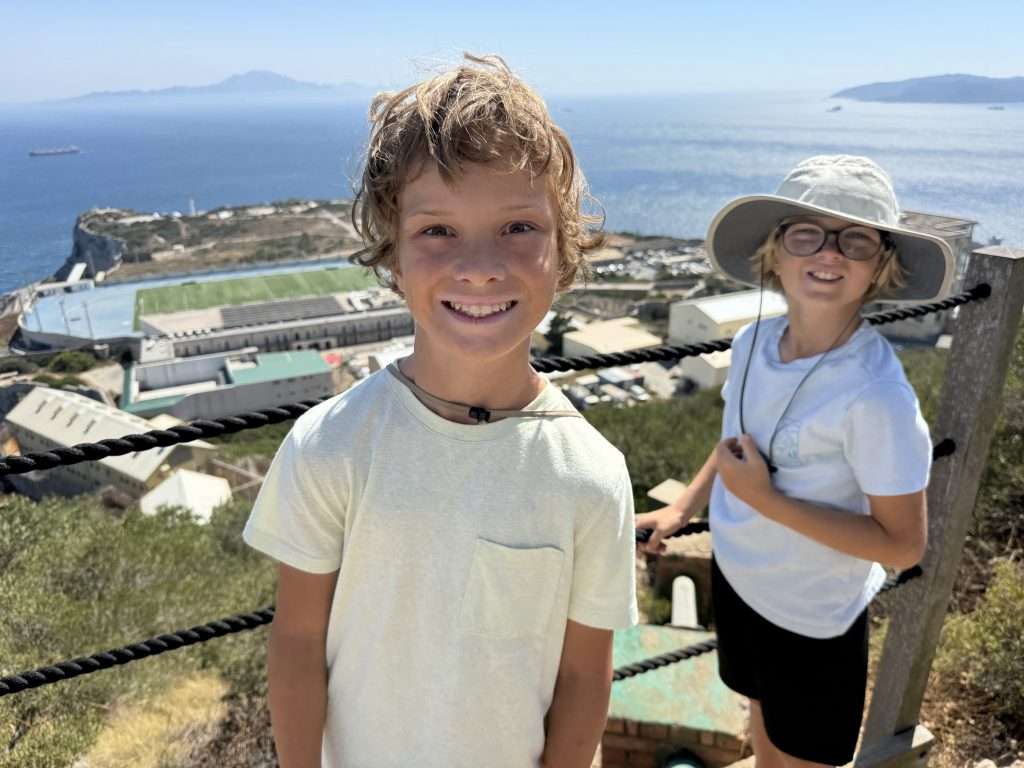
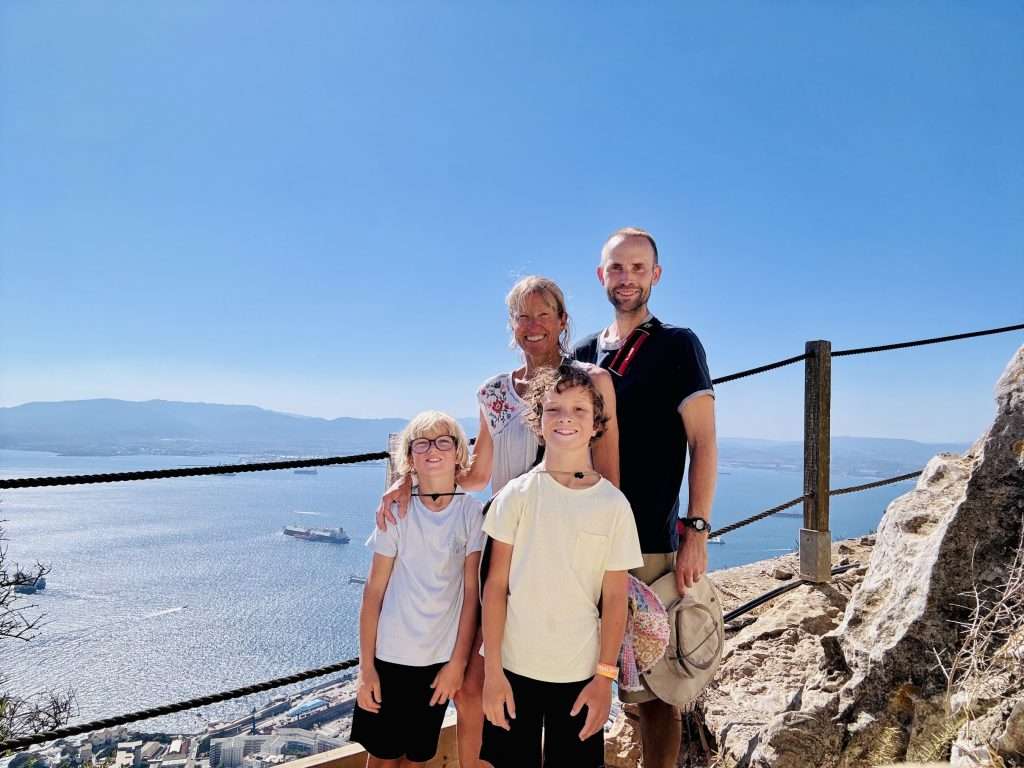
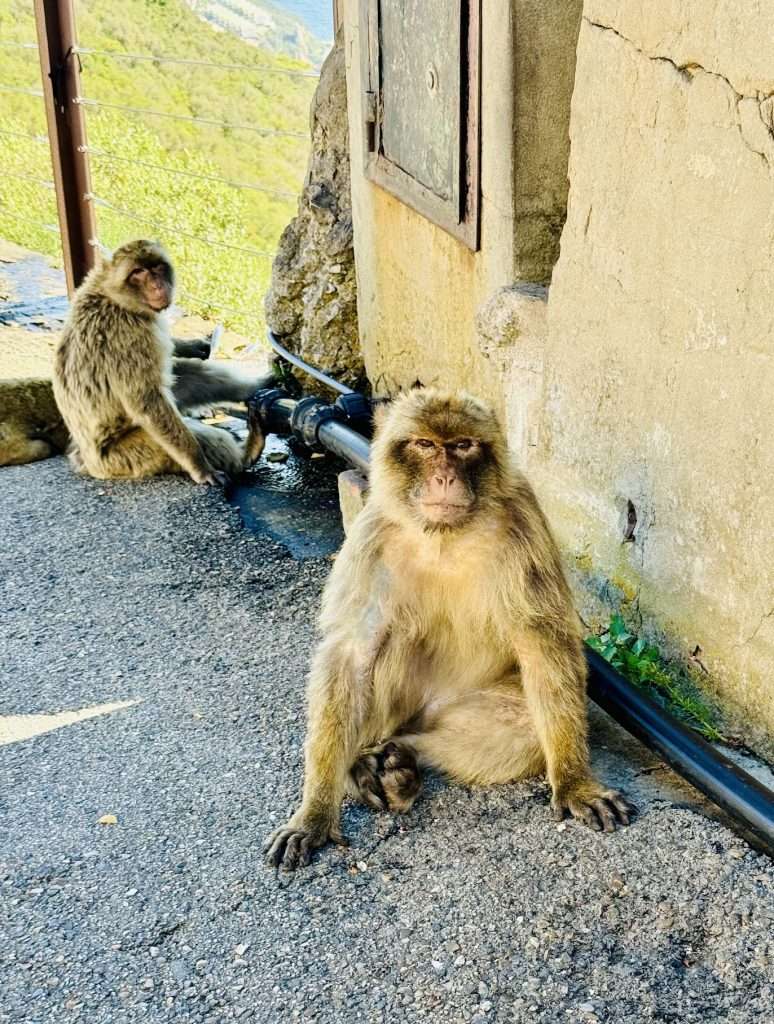
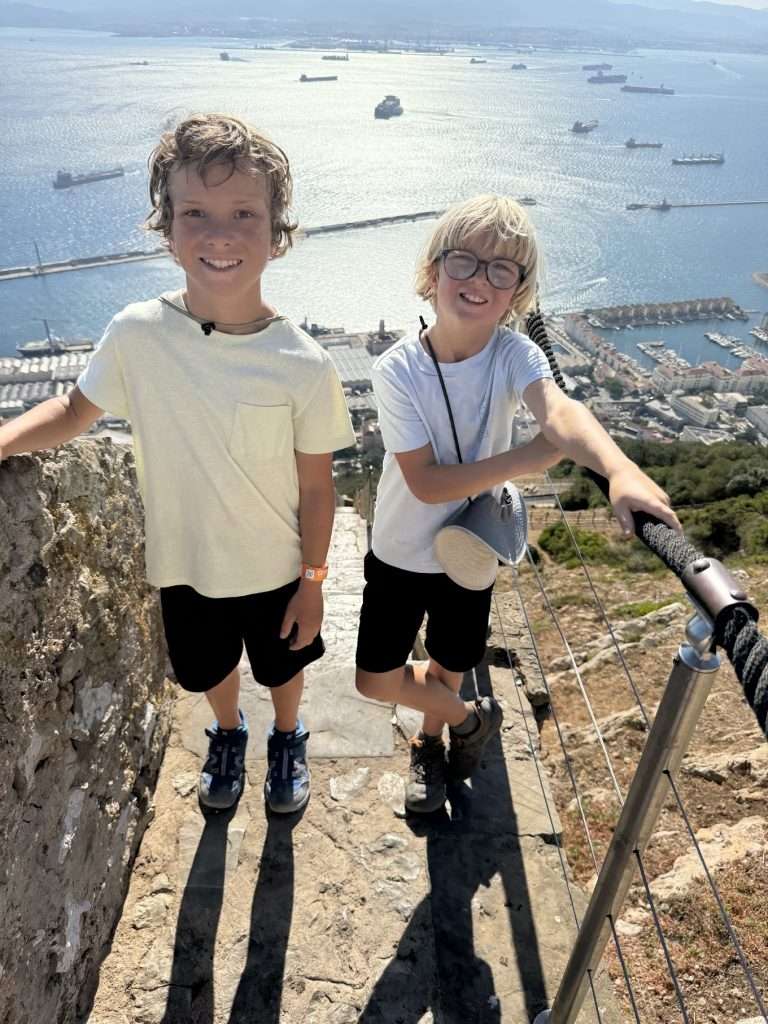
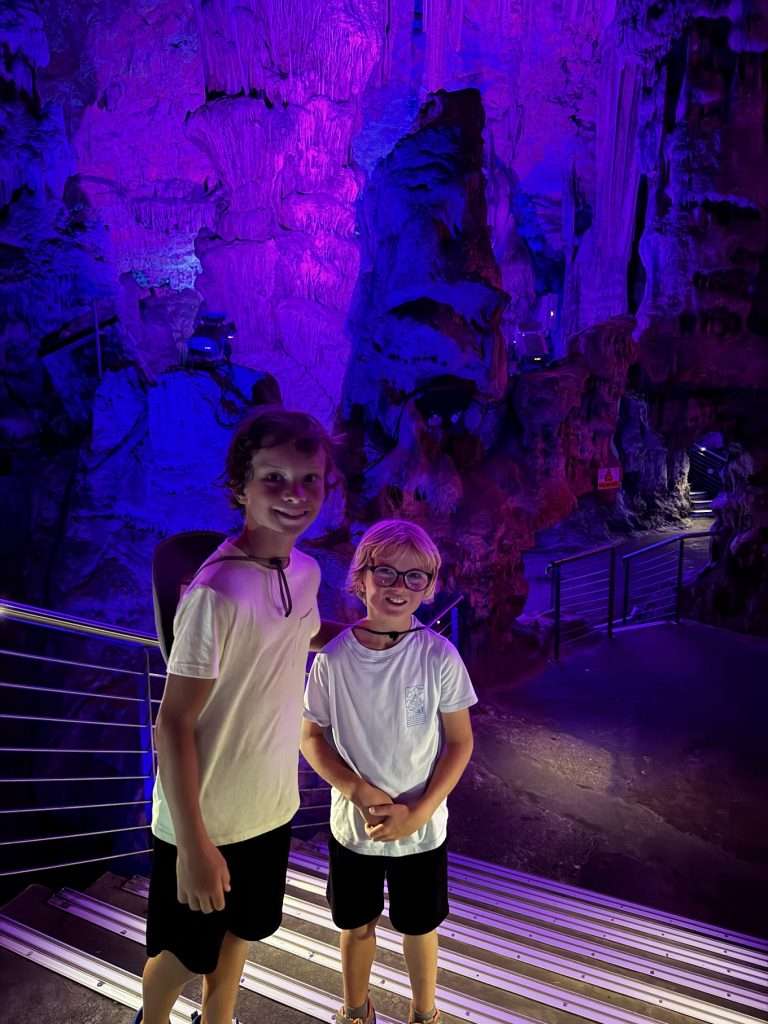
The Alhambra
The Alhambra is a palace (and fortress) located in Granada, Spain. It is one of the most famous monuments of Islamic architecture and one of the best preserved palaces of the historic Islamic world. We purchased tickets for the Alhambra and Nasrid Palaces for two adults, one youth, and one child for around $70. You will need to select a time slot for the Nasrid Palaces due to the limited capacity, so make sure to plan ahead on this one. We used “parclick” to secure parking ahead of time as well.
The Alhambra was so impressive that I hope to one day design our house to include many of the styles found there. While designing the Alhambra, the greatest concern for the architects was to cover every single space with decoration. In fact, most of the interior arches are false arches, just so there was something to decorate. Each of the walls are covered with beautiful and extremely rich ceramics and plasterwork, and the coverings have wooden frames that have been exquisitely carved.
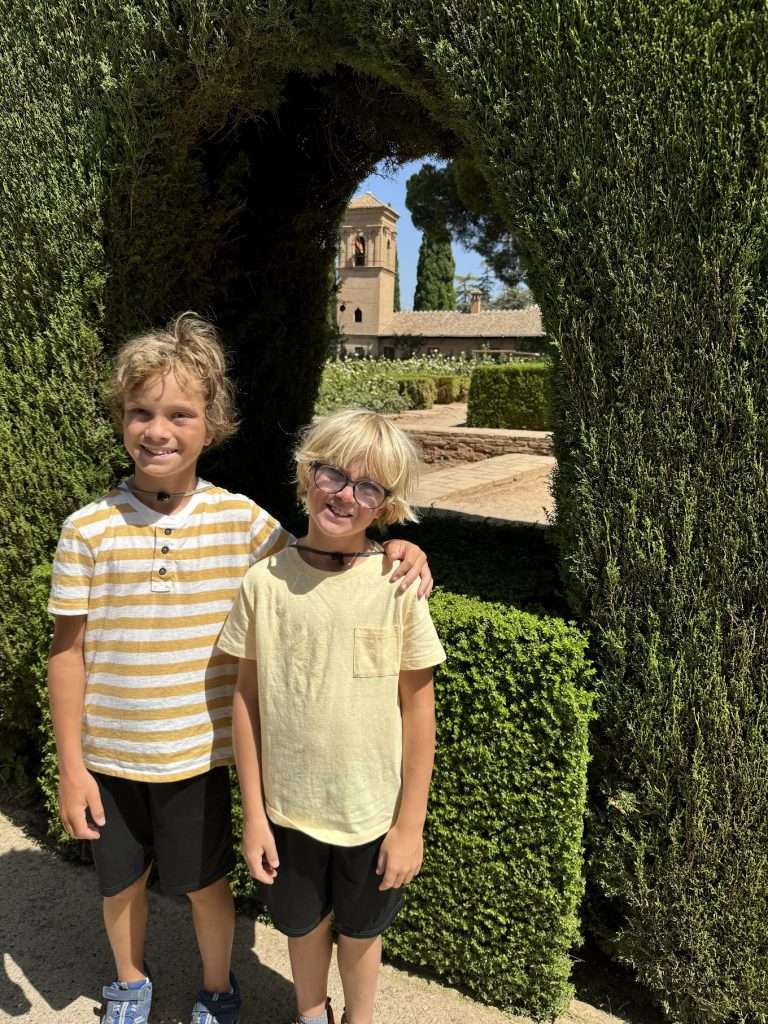
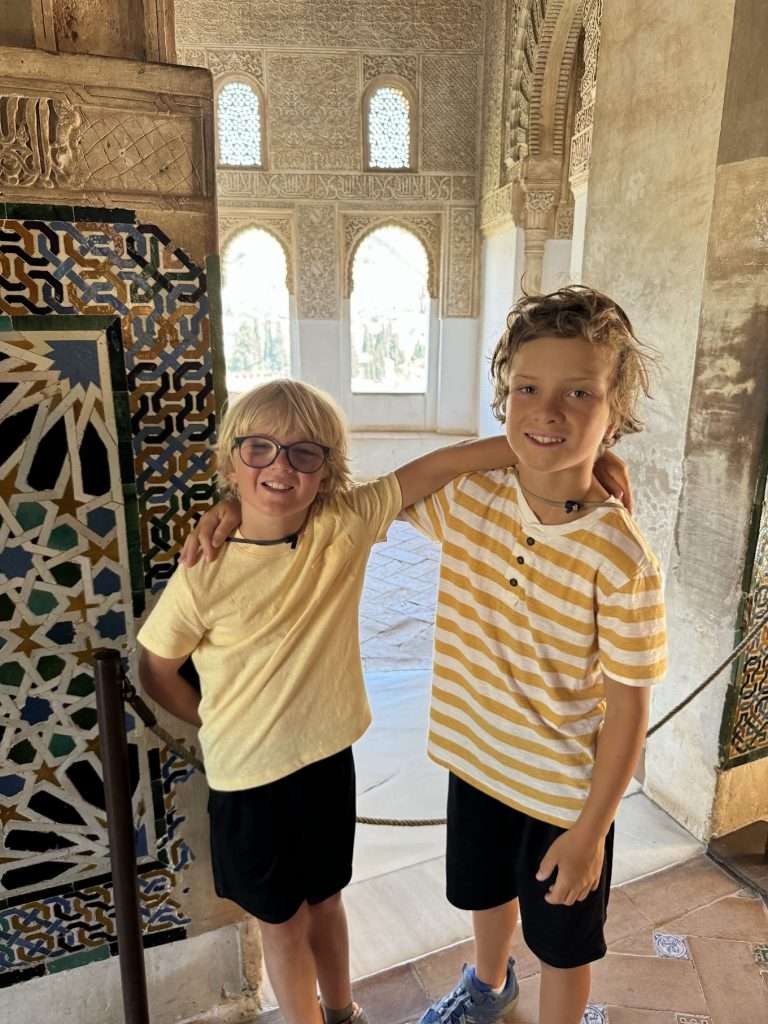
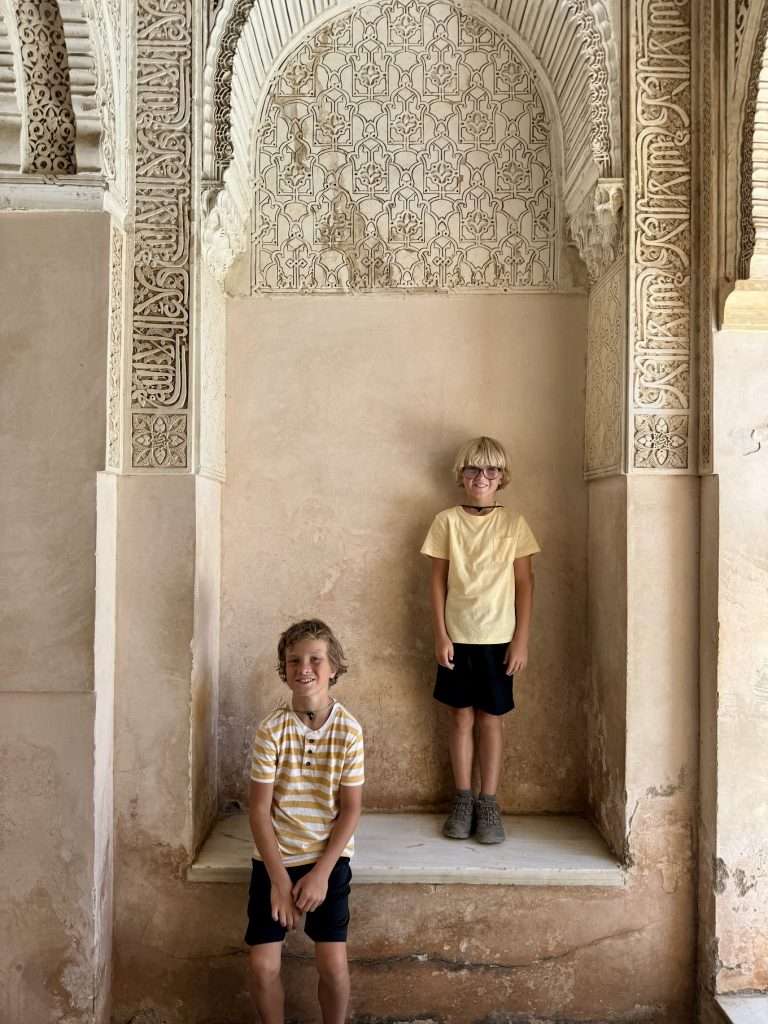
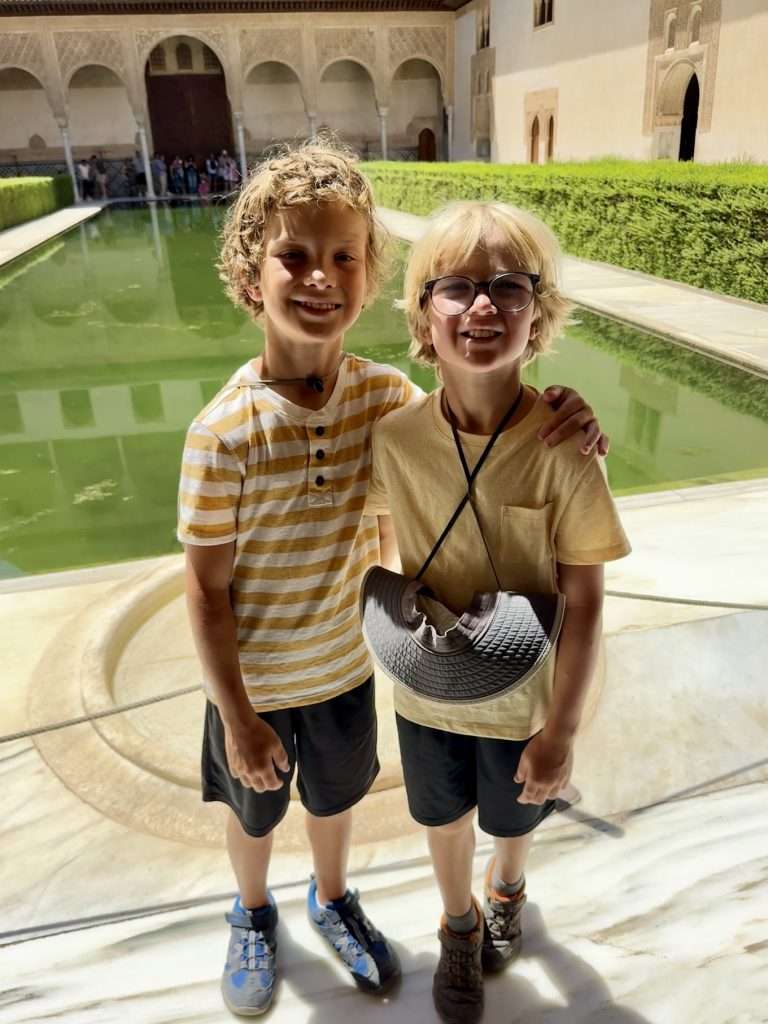
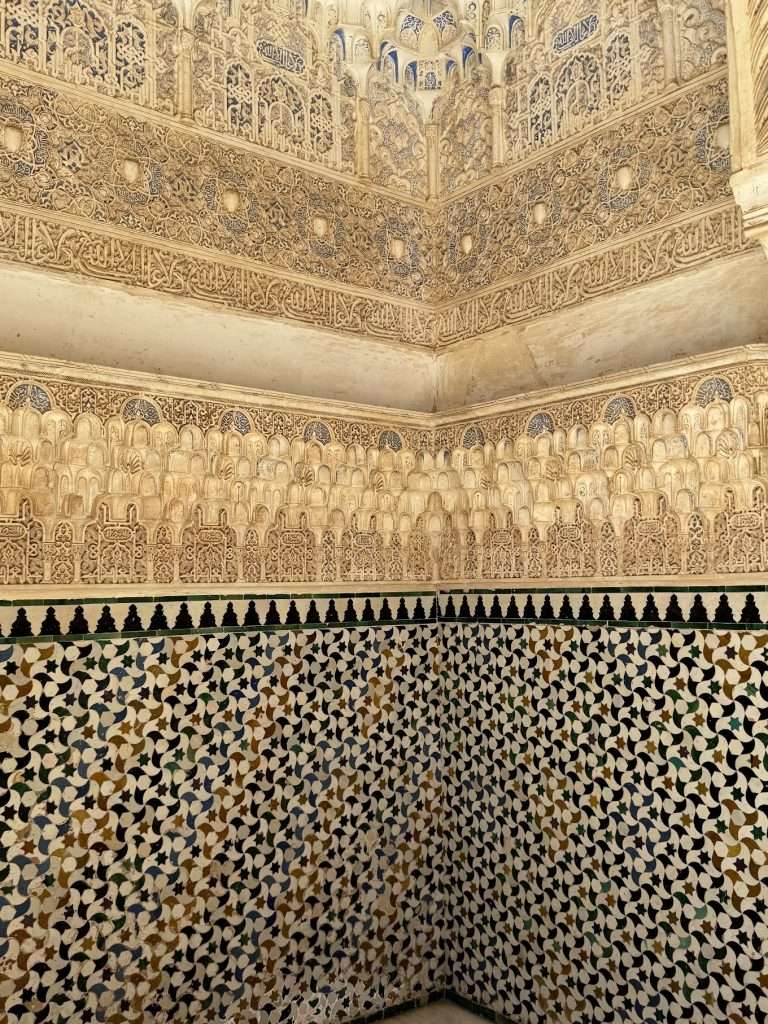
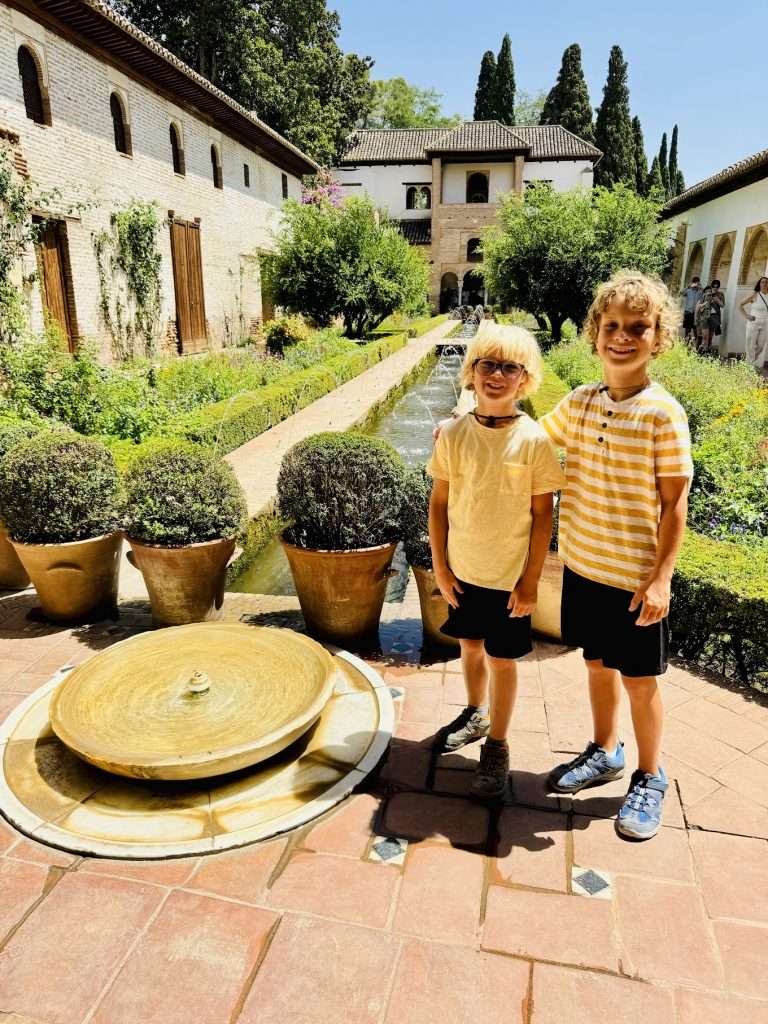
From the Alhambra, we drove three hours to Cartagena, Spain for the night. We stayed in the Calle Mayor Apartments in the City Center. There was no parking here and it was a little hard to find, but the room was spacious and relatively comfortable. (It did lack an efficient A/C system though.)
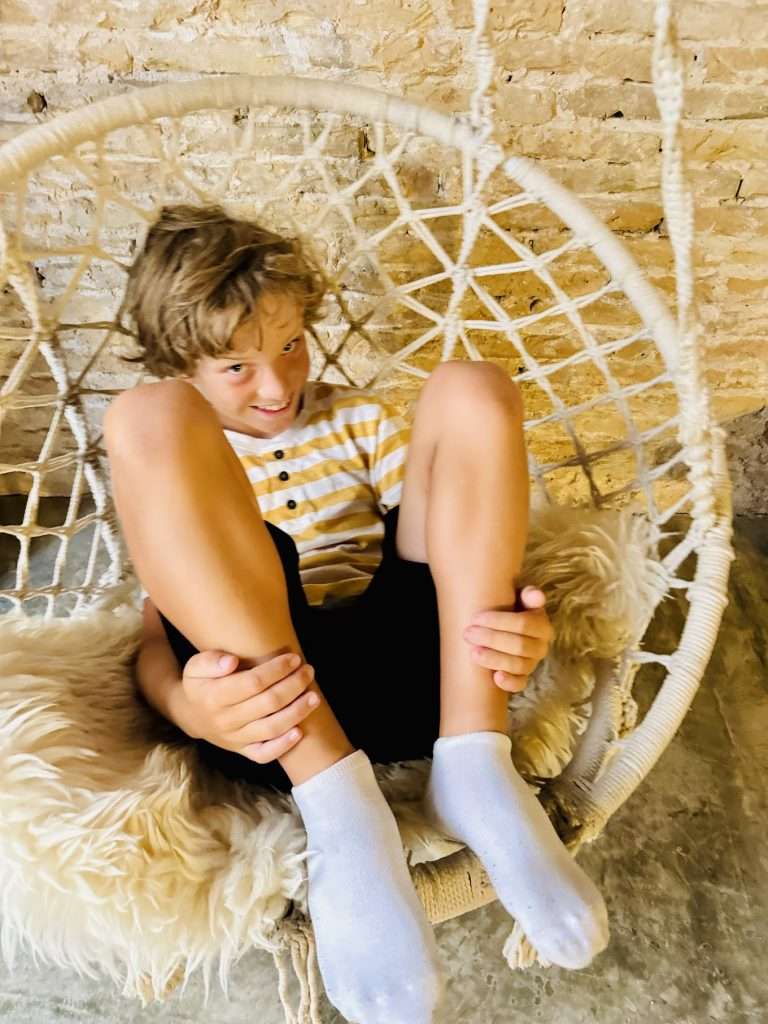
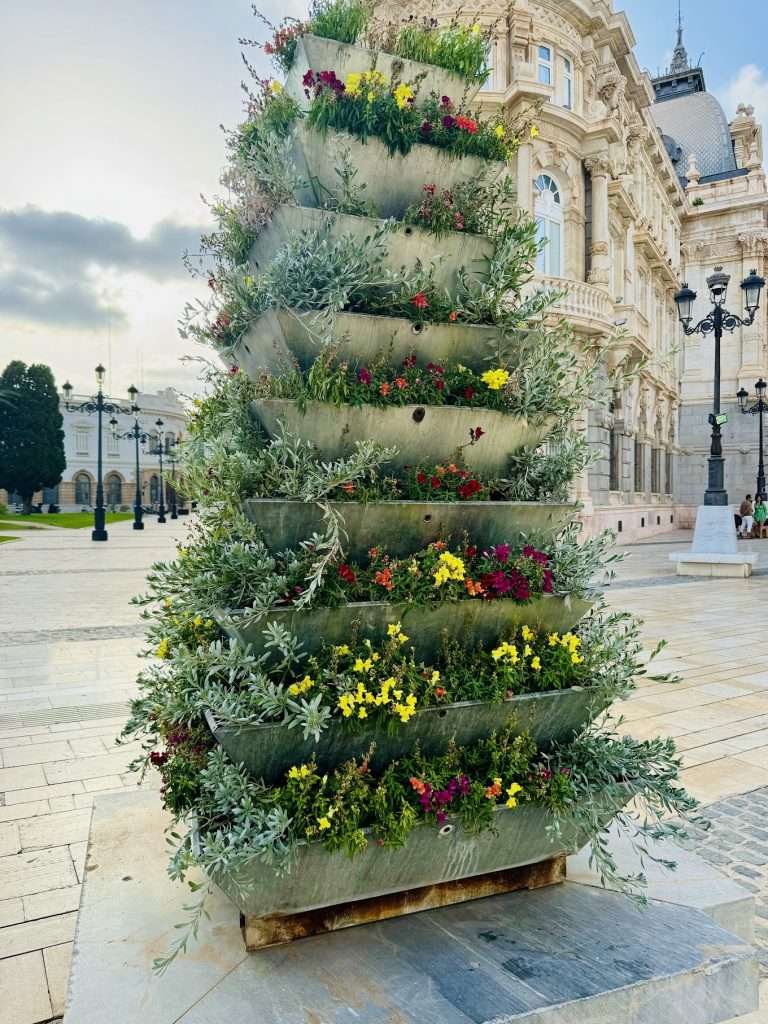
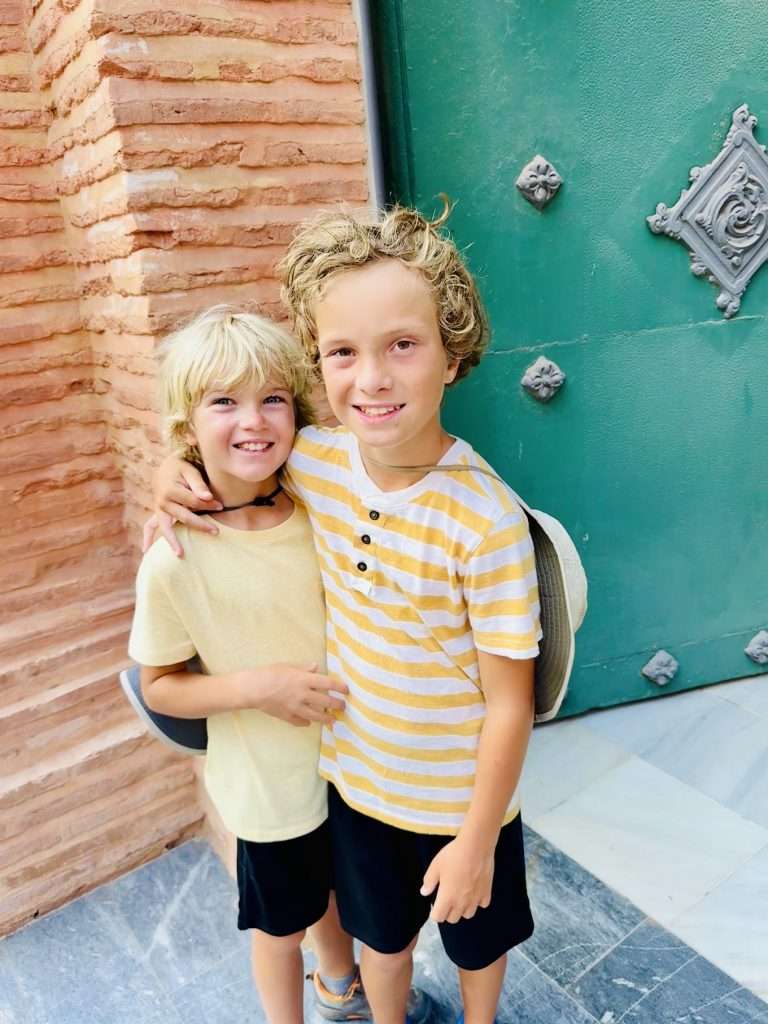
Cartagena, Spain
Cartagena is a Spanish city and a major naval station on the Mediterranean coast. Thanks to its strategic position on the Murcia coast, Cartagena has been inhabited by several cultures which left their mark on its artistic heritage. Cartagena is known for its modernist architecture which is visible by take a walk along the Calle Mayor, where our apartment was located.
In the morning our plan was to visit the Roman Theater Museum, but first we attempted to eat another “culture meal”, this time tapas. The french fries were the only part we consumed in earnest.

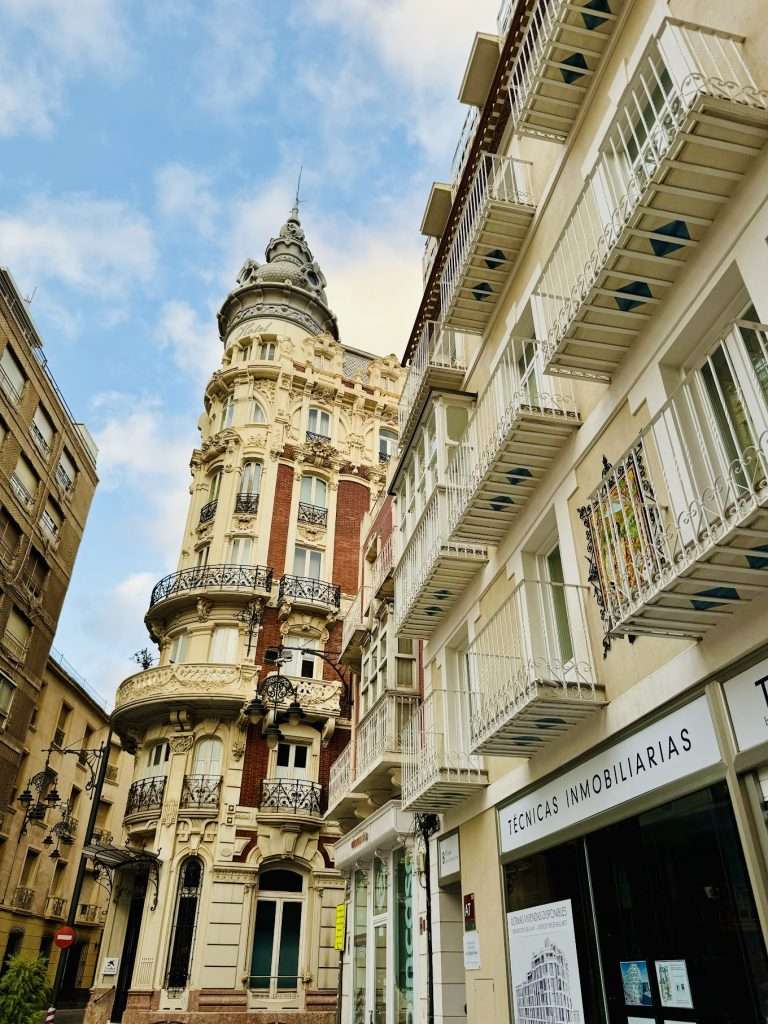
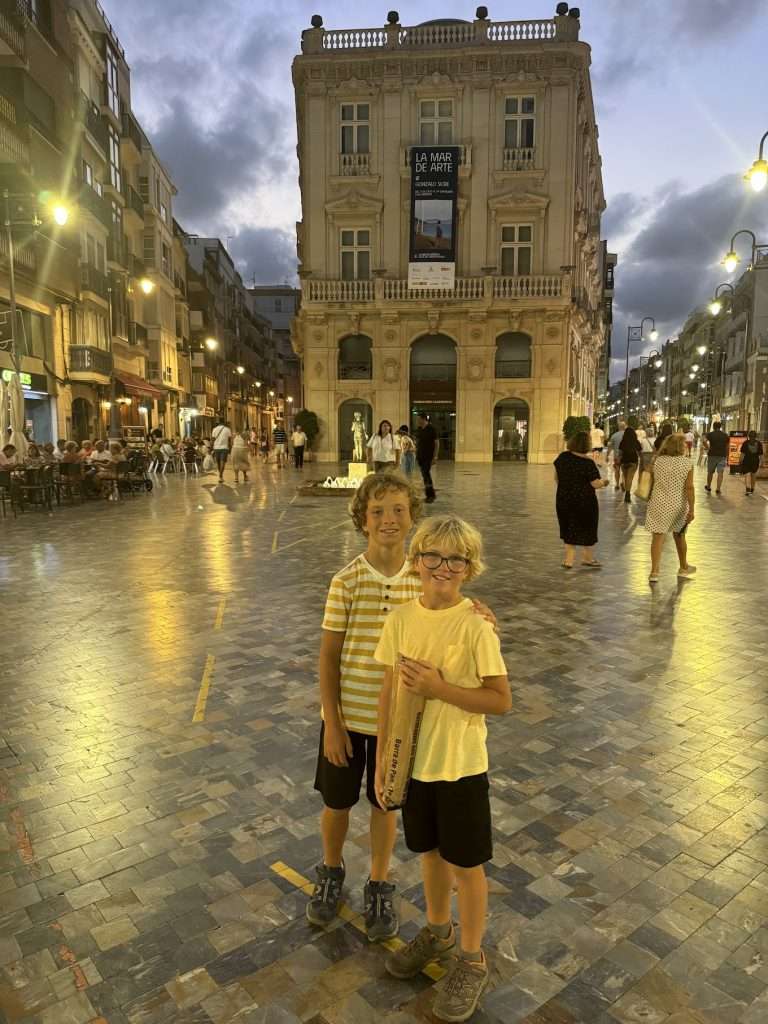
In 1988, while carrying out a routine archaeological probe for a construction site on the most prominent of these hills, archaeologists stumbled upon the remains of a sumptuous Roman theater. This was then determined to be The Cartagena Roman Theater. The Cartagena Roman Theatre was built between the years 5 and 1 BCE, and had a capacity for 6,000 spectators. It was typically used for Roman theatrical performances during the time of ancient Rome. In 1988, while carrying out a routine archaeological probe for a construction site on the most prominent of these hills, archaeologists stumbled upon the remains of a sumptuous Roman theater. The Museum contains tons of artifacts that were uncovered and costs $7 Euros for adults and $3 for kids.
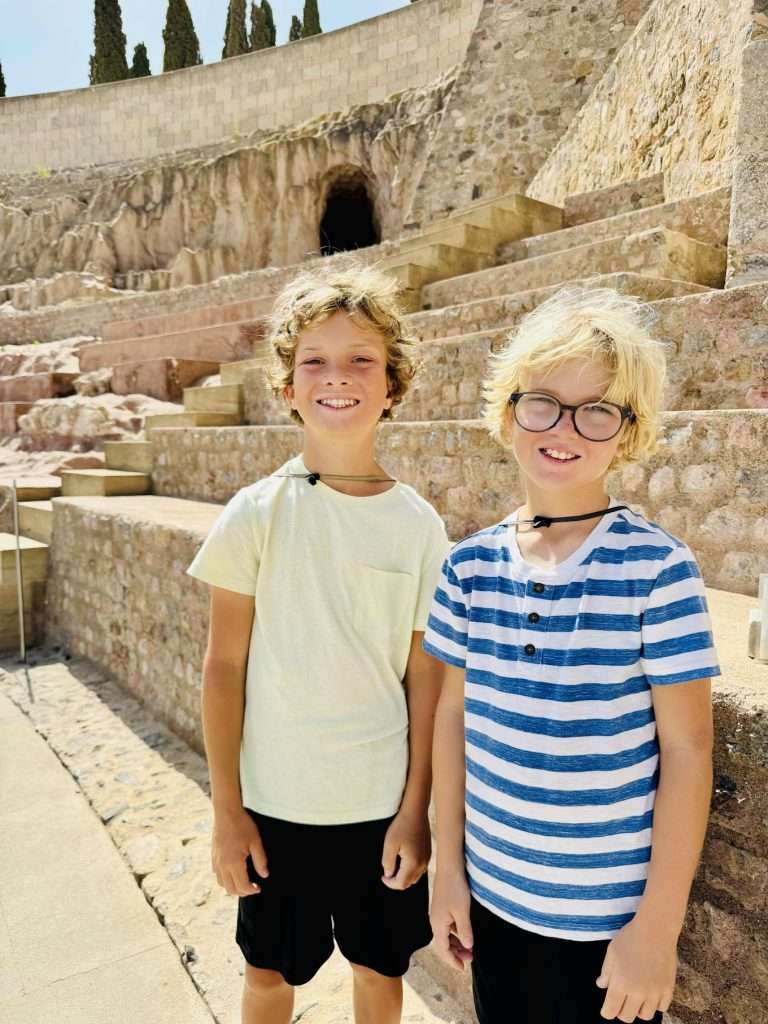
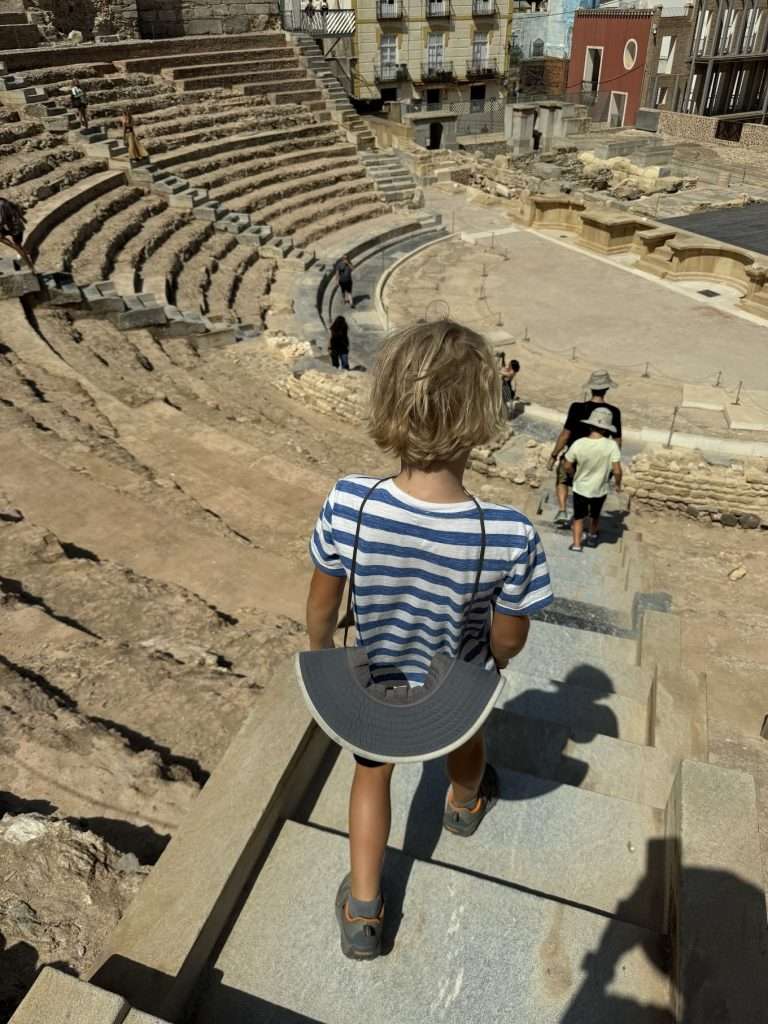
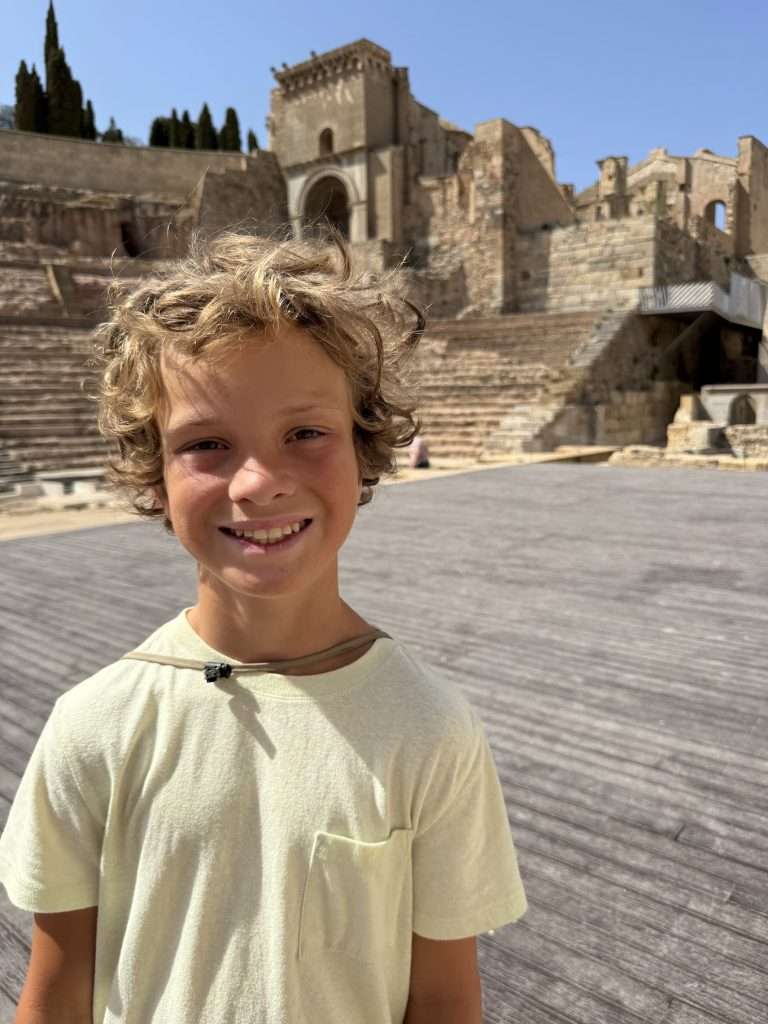
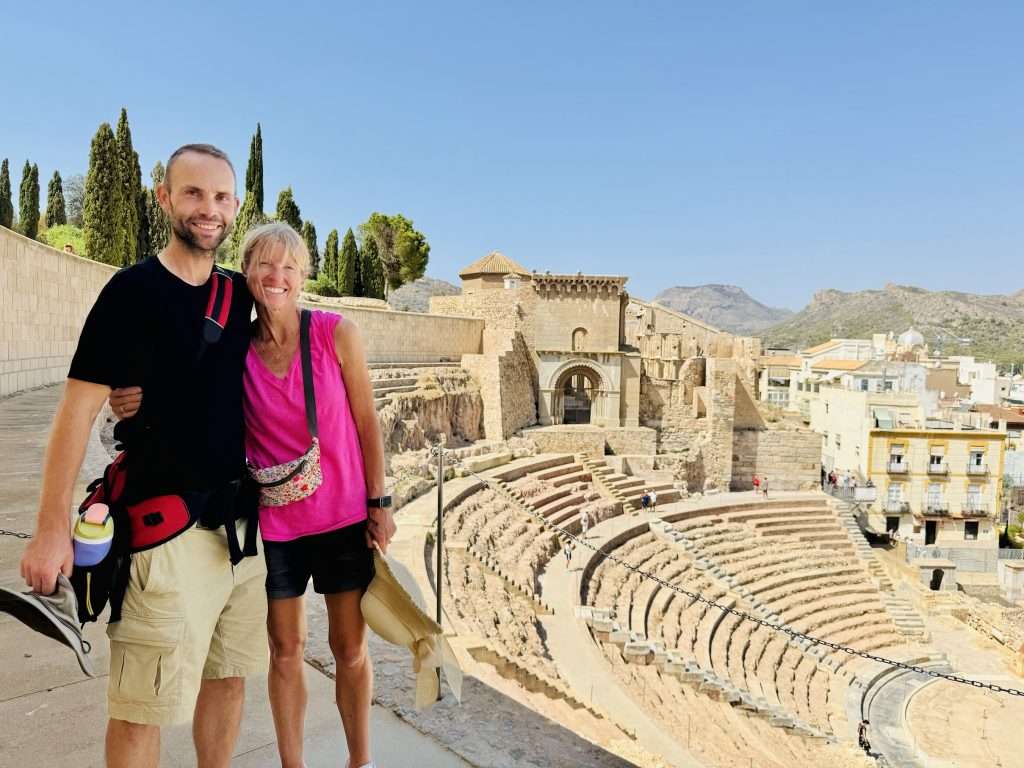
Coves de Sant Josep
We then continued on to Valencia, a place we wished that we never visited. Originally, there were two nights at a “Luxury Beachfront Apartment” but lasted just one. After being given no information on how to access our apartment, or the promised garage space, and so were fumbling around trying to figure it out when Doug had his backpack with all of our chargers, his laptop, BOSE headphones and sweatshirt stollen by one of the many sketchy men targeting tourists on the beach. We spent the afternoon at the police department filing an incident report (the police there were not going to do anything) and then the kids were scared to stay there so we left after one night.
After replenishing our chargers at the Spanish version of Wal-mart, we drove to Coves de Sant Josep for a cave tour. Located on the Costa de Azahar, Les Coves de La Vall d’Uixó is the longest navigable underground river in Europe. The temperature in the cave is maintained at a constant 20 ºC throughout the year. Tickets were $65 per adult and we had our own personal guide who made sure that we did not get clobbered by a stalactite. At the end of the tour there is a moderately comical rendition of a laser light show staring “Coldplay”. This was a decent tour if you happen to be in the area, but I wouldn’t go out of your way to get there.
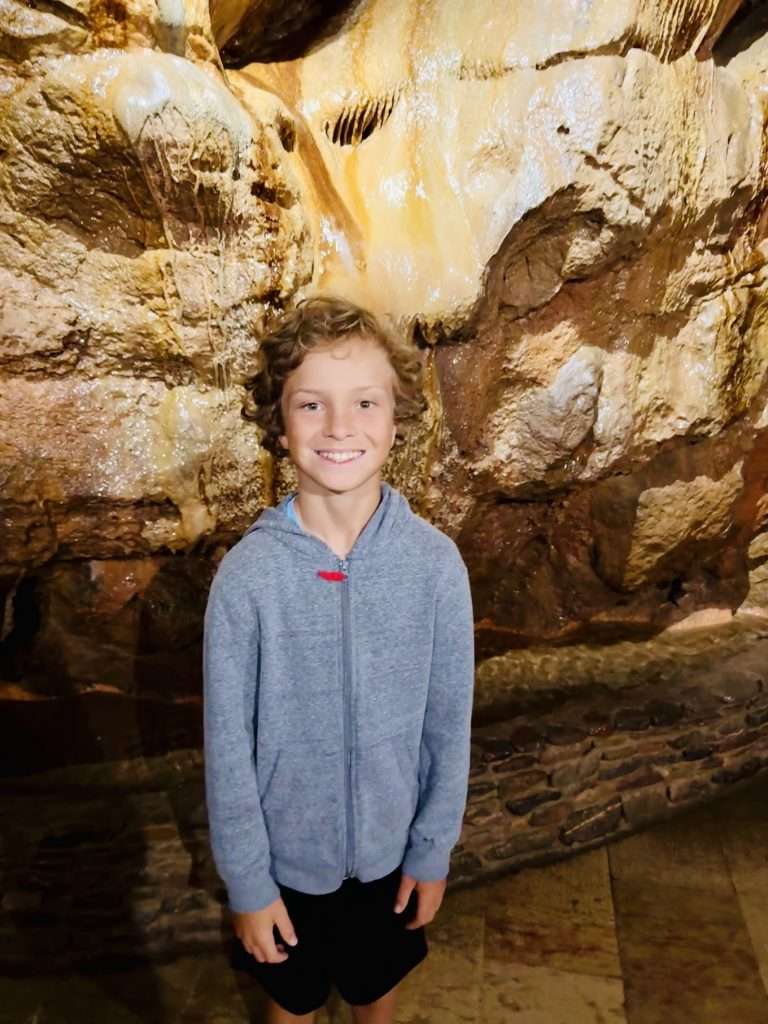
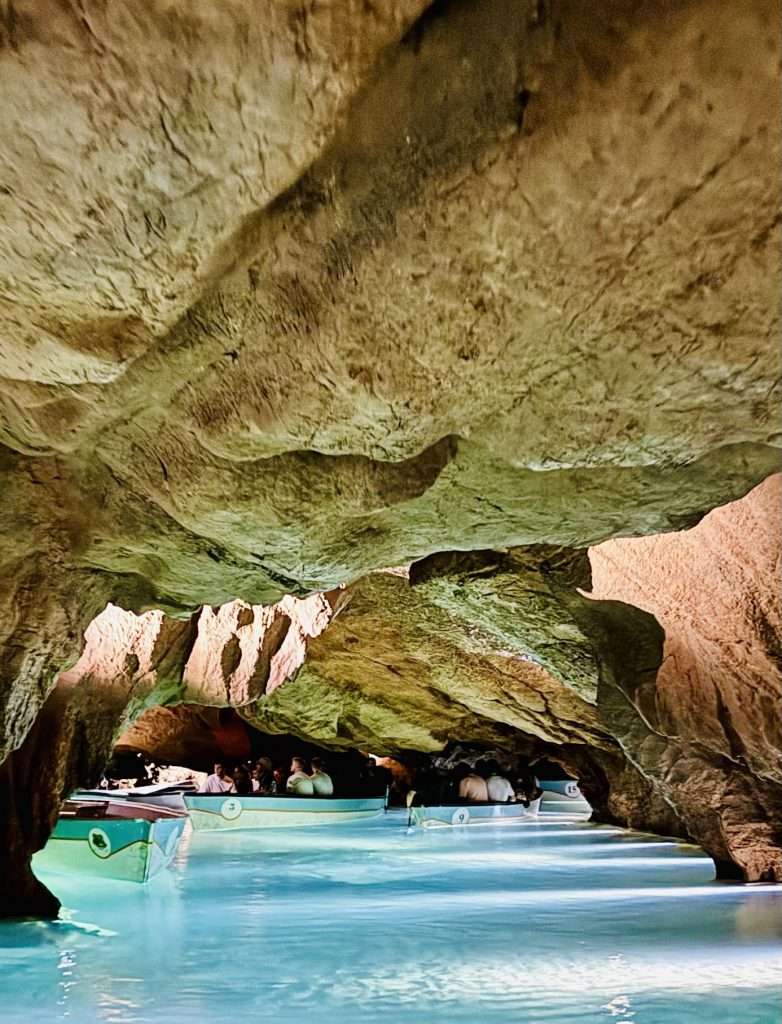
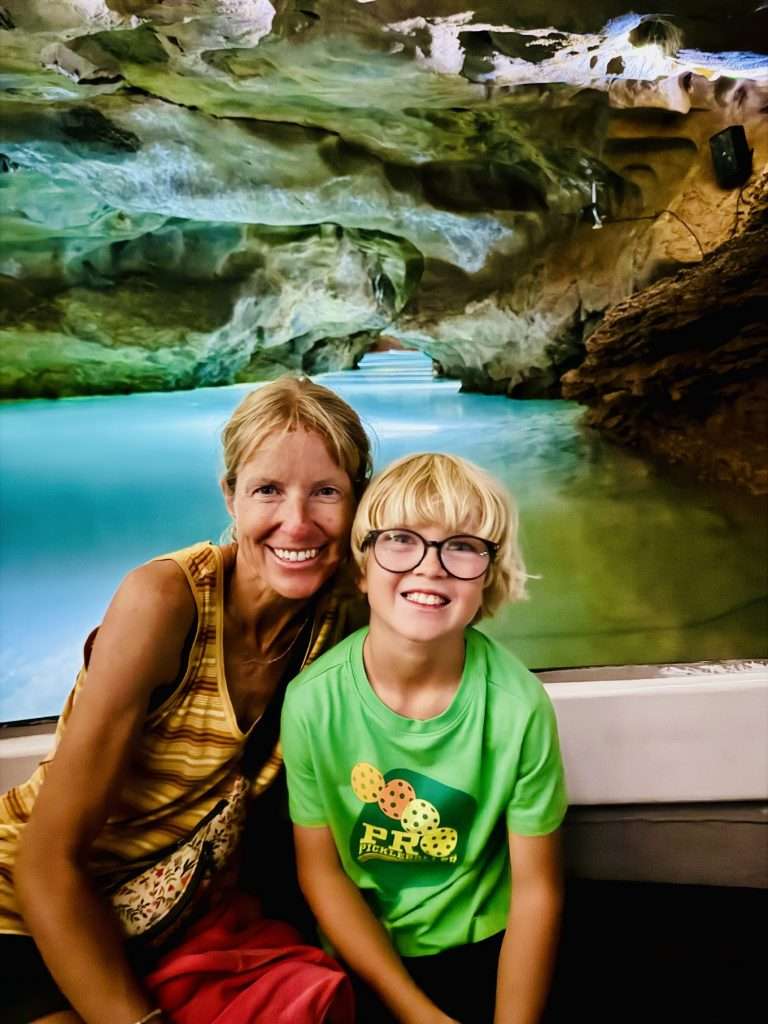
That night we spent a quiet night renting a room at Les Muntades. The owner didn’t speak English, but was very kind and it was nice to get away from the city and have a swim!
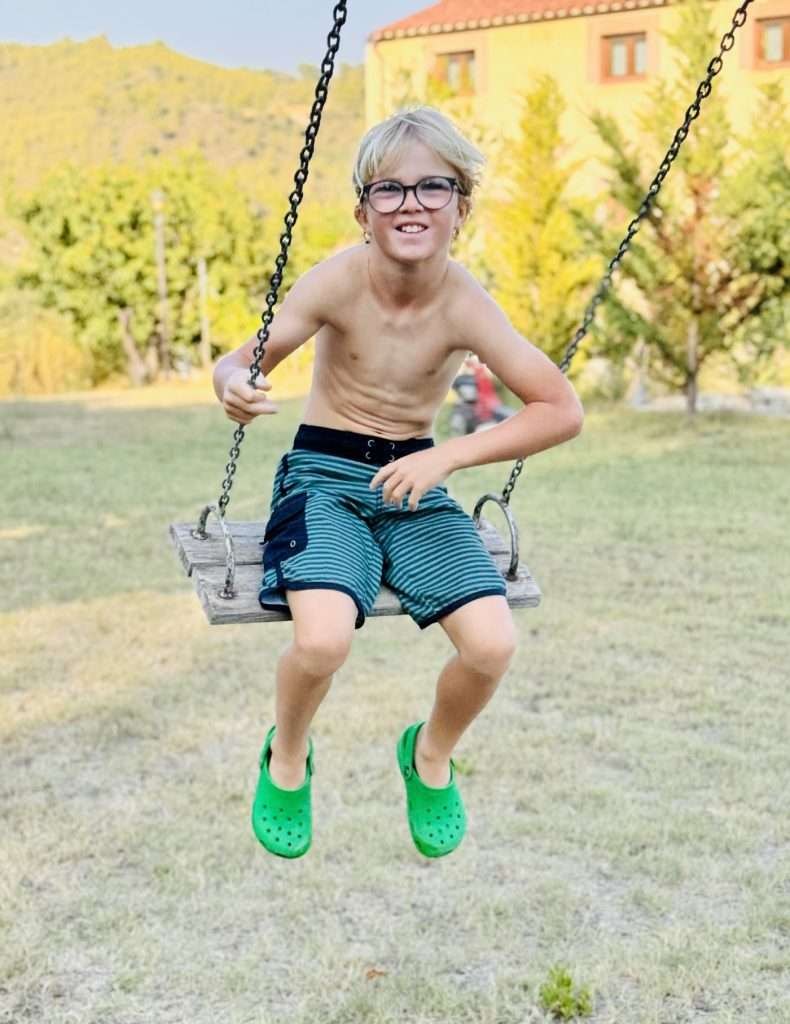
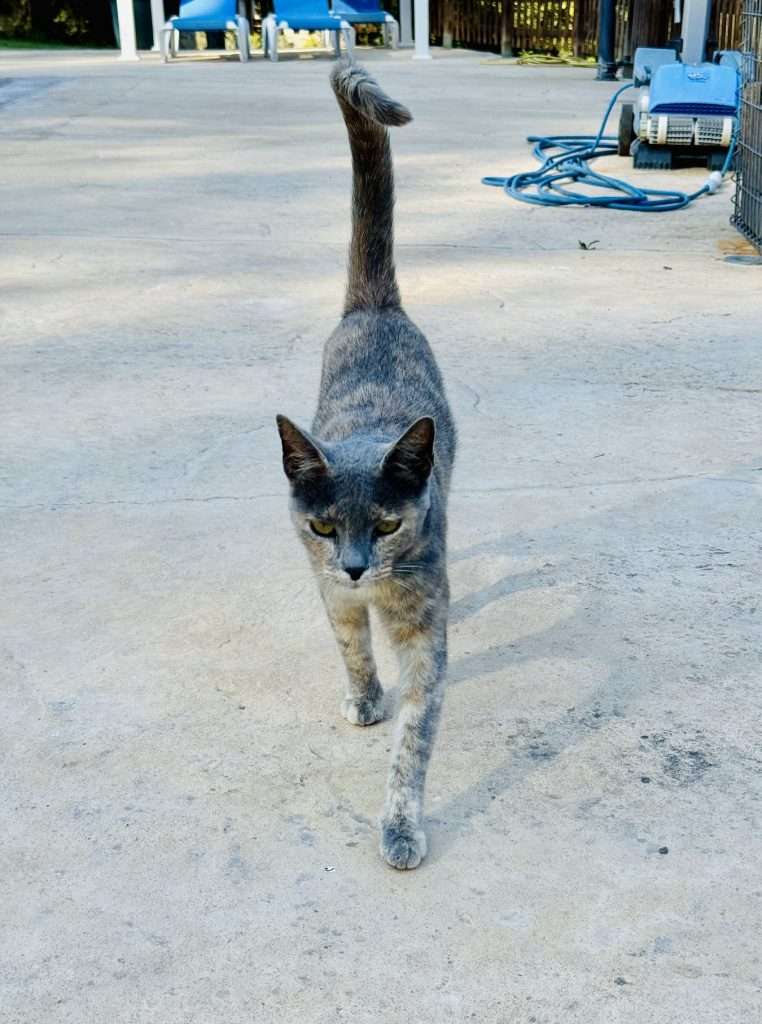
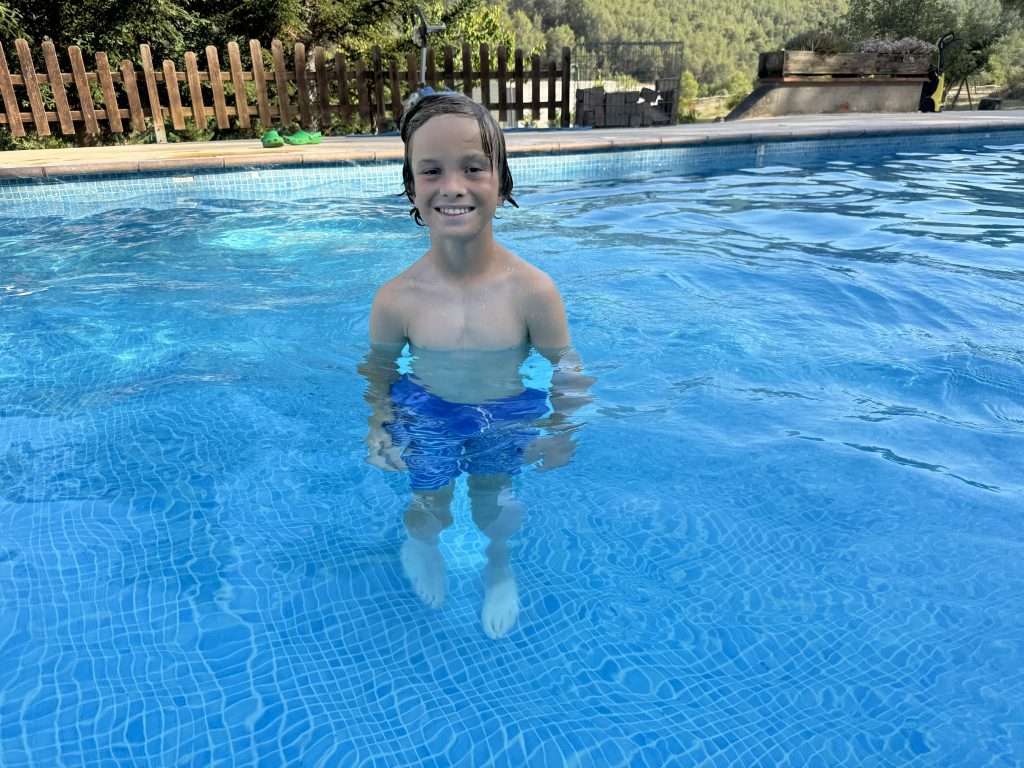
Barcelona, Spain
We chose to stay about 45-minutes outside the city and then drive in for the day. We reserved two nights at Hotel Can Farrés in El Bruc which was the nicest hotel (and location) of the entire trip. The Can Farrés is nestled among fields of olive and almond trees, inside the Montserrat Nature Park and adjacent to the mountain. We gave this location glowing reviews.
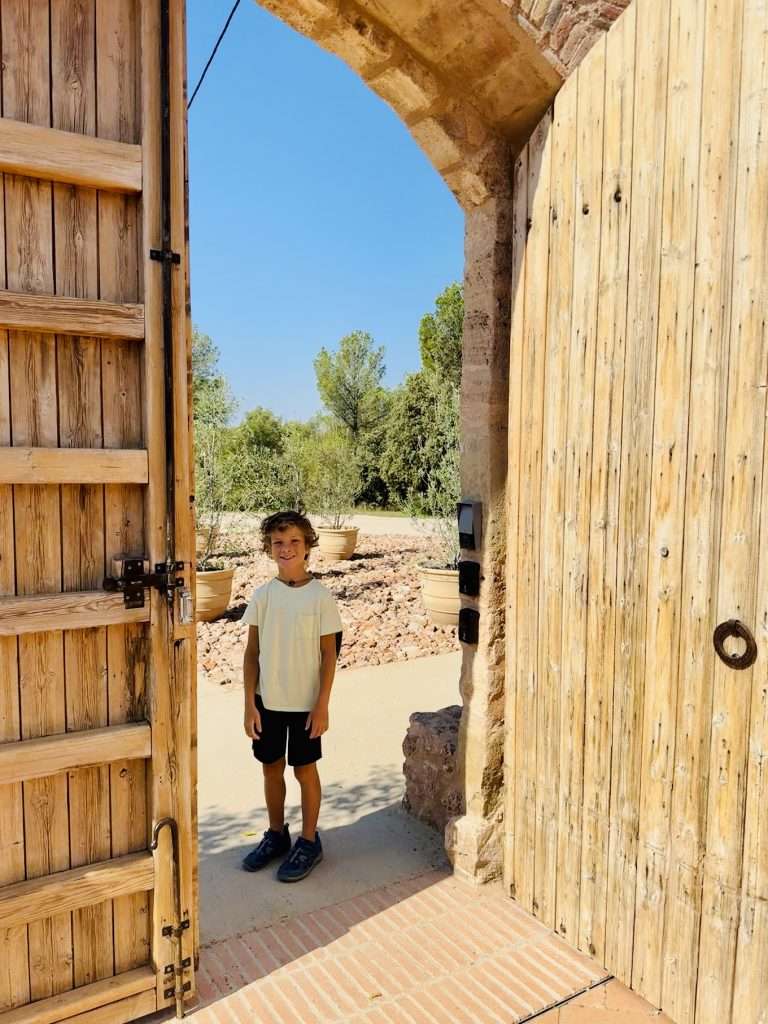
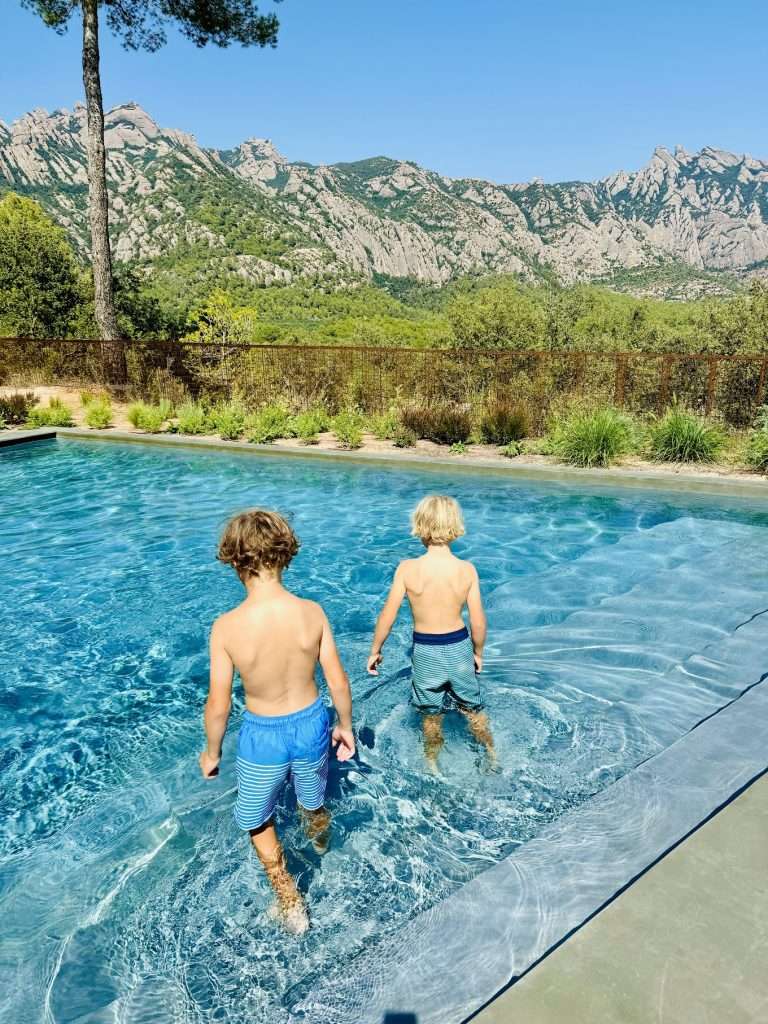
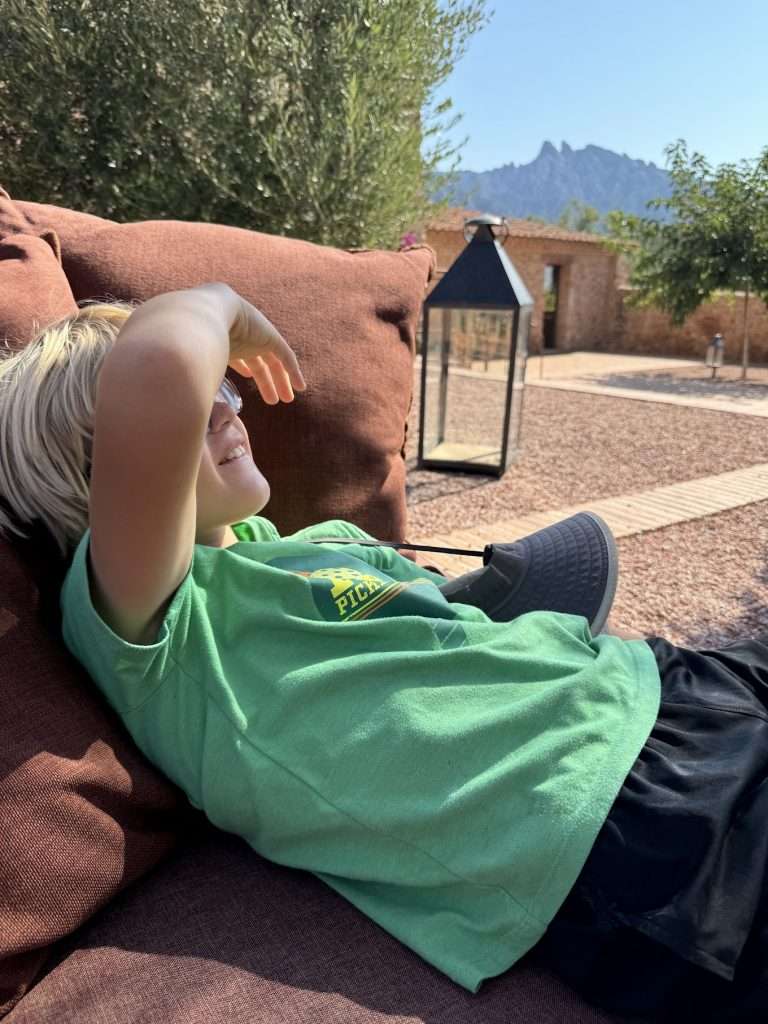
As for Barcelona, we chose to drive into the city, and then take the metro and walk. We parked near the Sagrada Familia and reserved the spot a day prior. We walked 39 minutes from our car to our first stop, the Park Guell. Park Guell is a public park that was built in the early 20th century by the artist, Antoni Gaudi. This landmark park is known for its unique architecture and stunning views, but requires a LOT of walking and, in August, it is very warm. We were mostly entertained by how unfriendly the park workers were. They were snapping at tourists asking questions around how to navigate the park. Mind you, they do not have signs, or maps anywhere, so you are kinda on your own.
It was then a 26 minute walk to the Sagrada Familia where we had timed entry tickets.
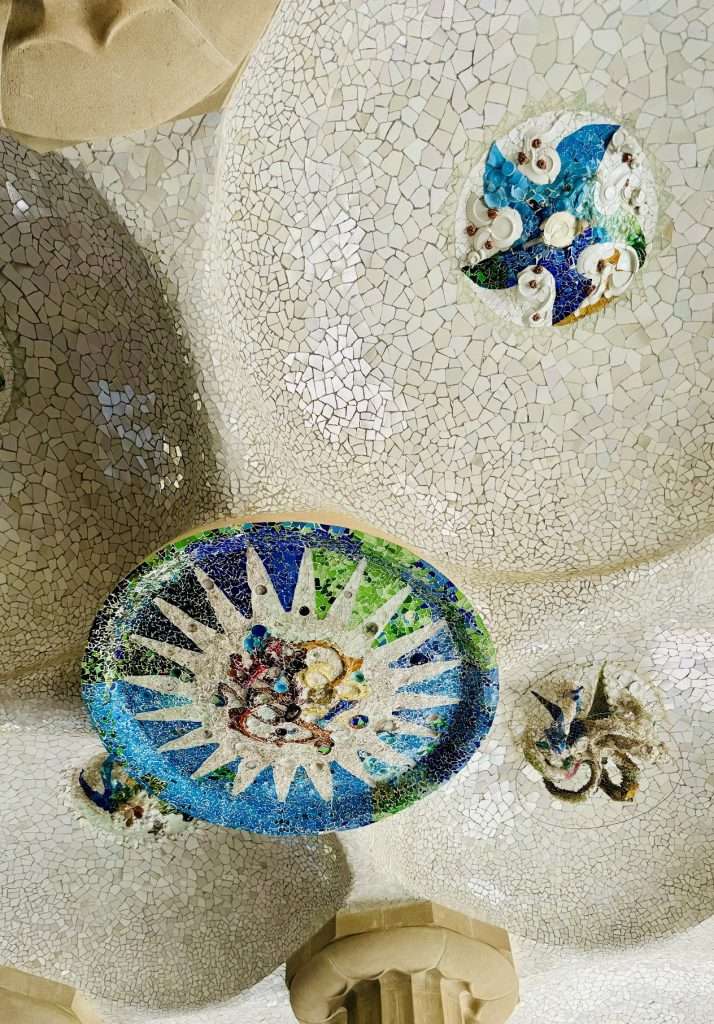
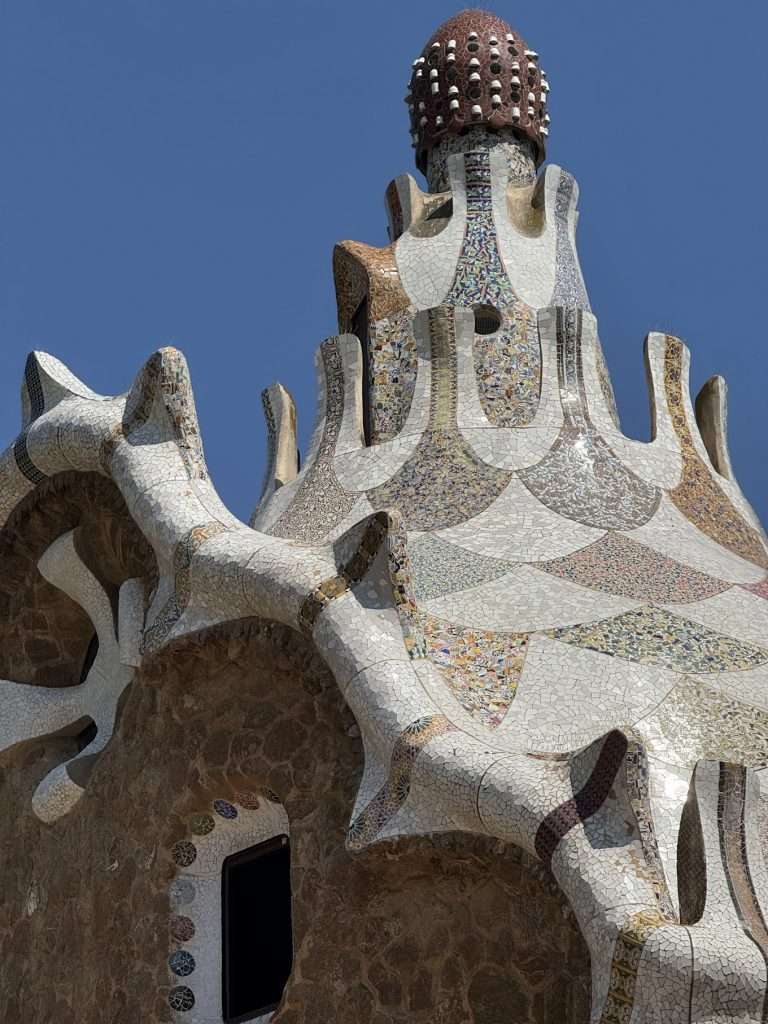
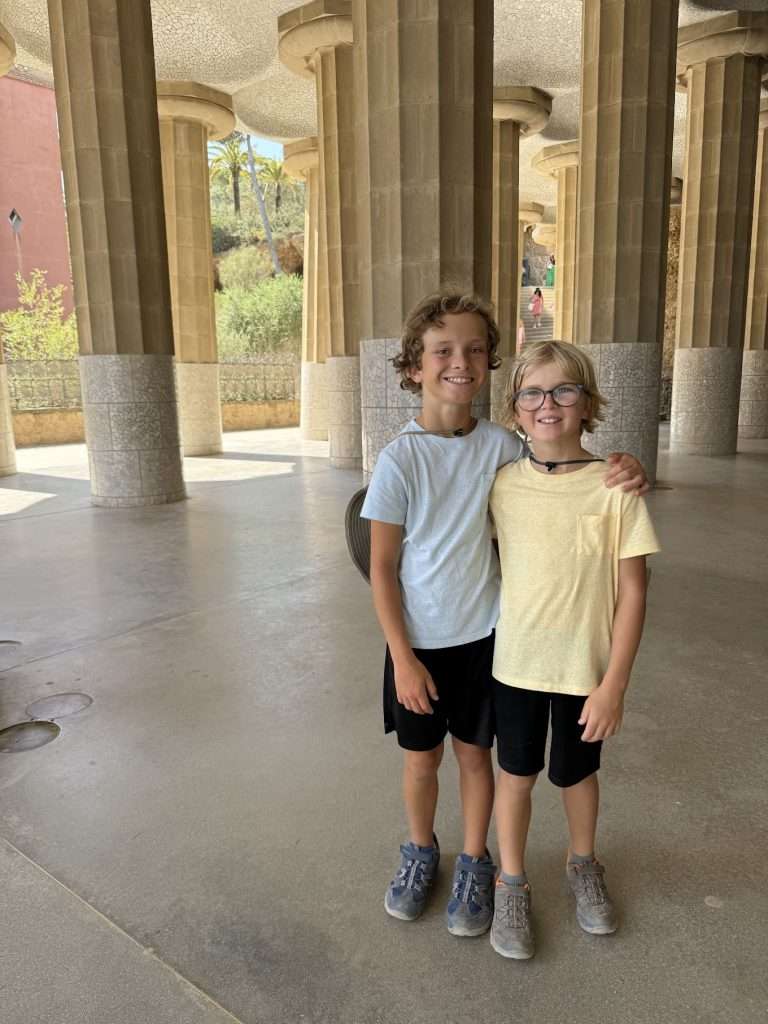
The Sagrada Familia amazes with its architecture, shapes and its cultural relevance. It is considered to be Gaudi’s most important work in Barcelona, and was declared a UNESCO World Heritage Site in 2005.
While the outside is an impressive work of art, inside you witness the basilica’s massive columns towering seventy meters to the ceiling. There are huge stained-glass windows where sunlight streams through the interior creating a dreamlike experience. The tower was not worth it though. Granted it was under construction, but still we have climbed better.
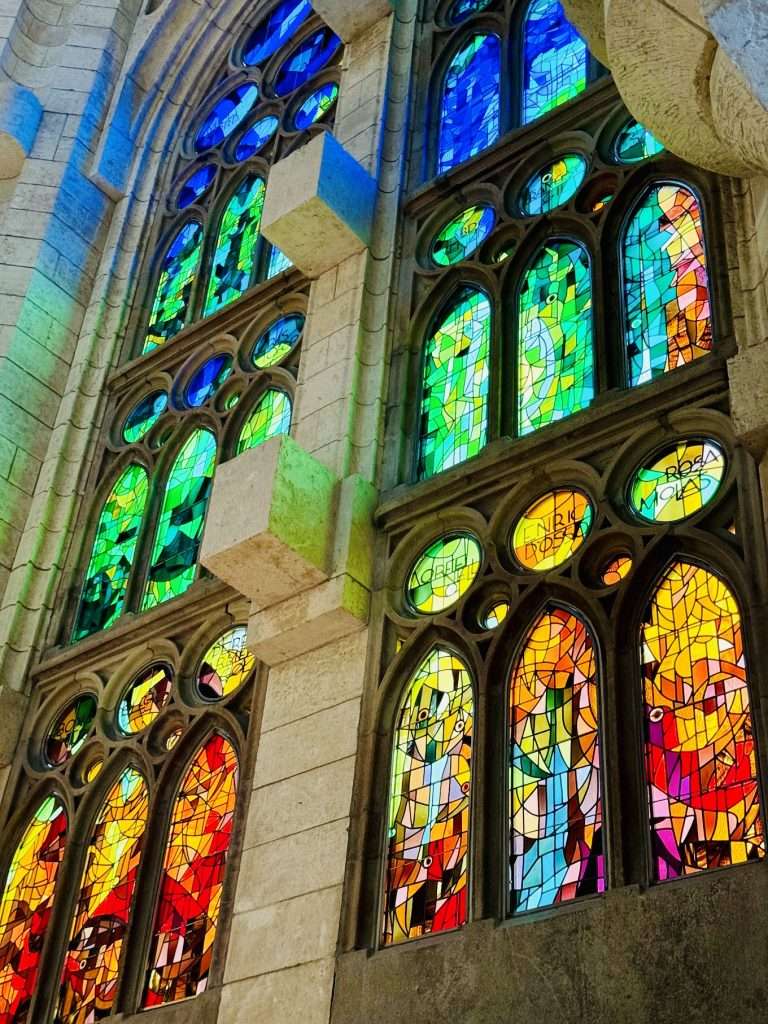
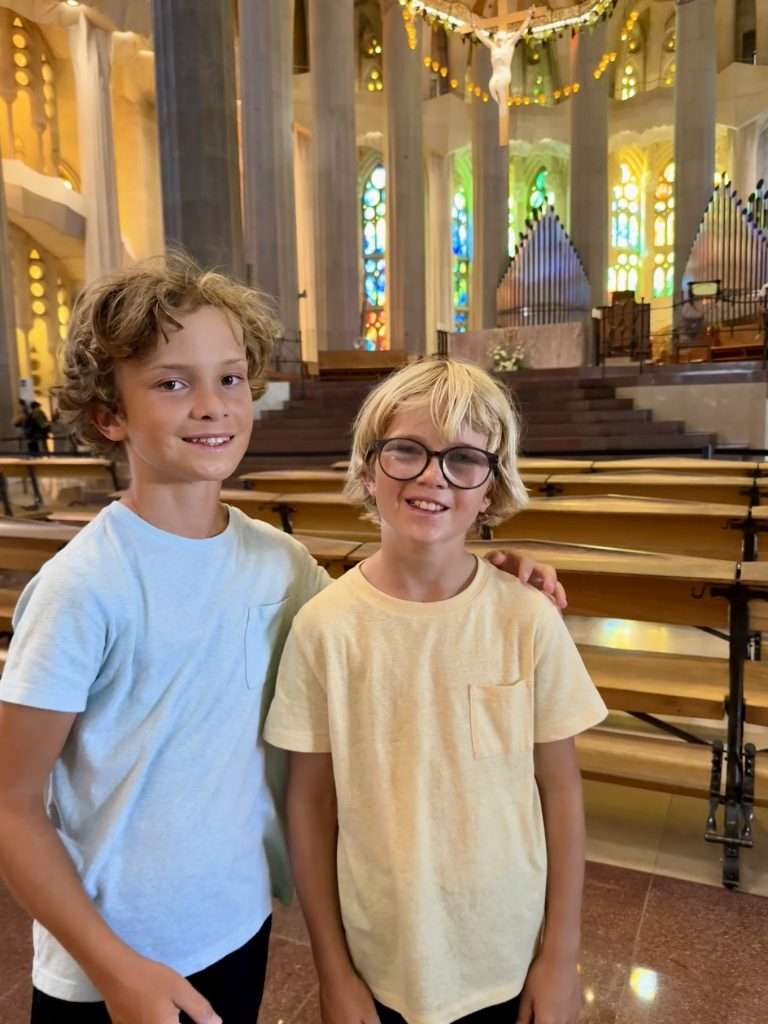
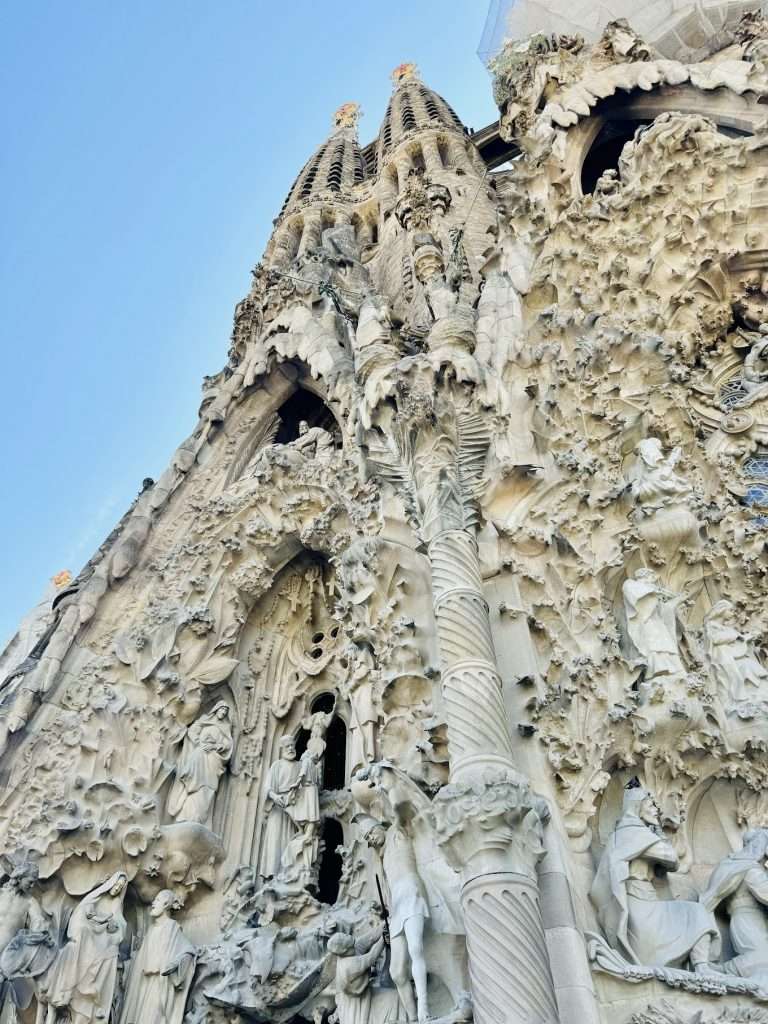
From there it was another 30 minute walk to Casa Batlló. In 1907 the building now known as Casa Batlló was purchased by Mr Josep Batlló. Batlló then granted full creative freedom to Antoni Gaudí. Gaudi changed the façade, redistributing the internal partitioning, and converting the inside into a true work of art.
We purchased the Platinum tickets ($50 per adult, under 12 is free) and this was fortunate because it allowed us to skip the line. The final part of the tour is the Gaudi Cube which is uh, pretty trippy.
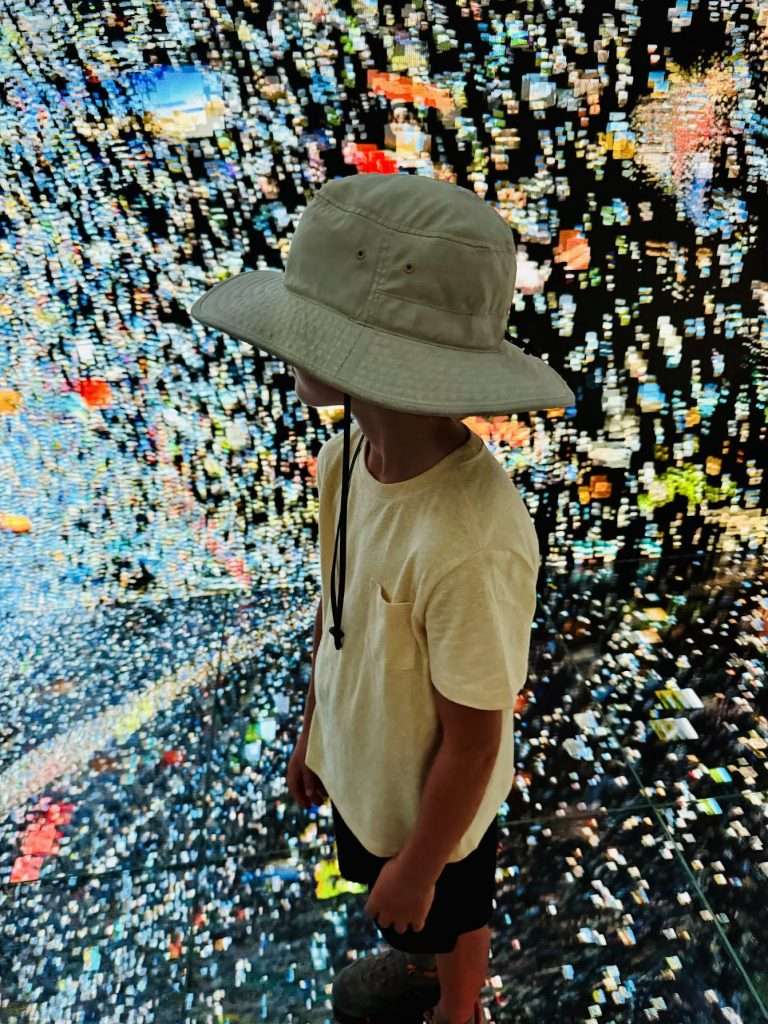
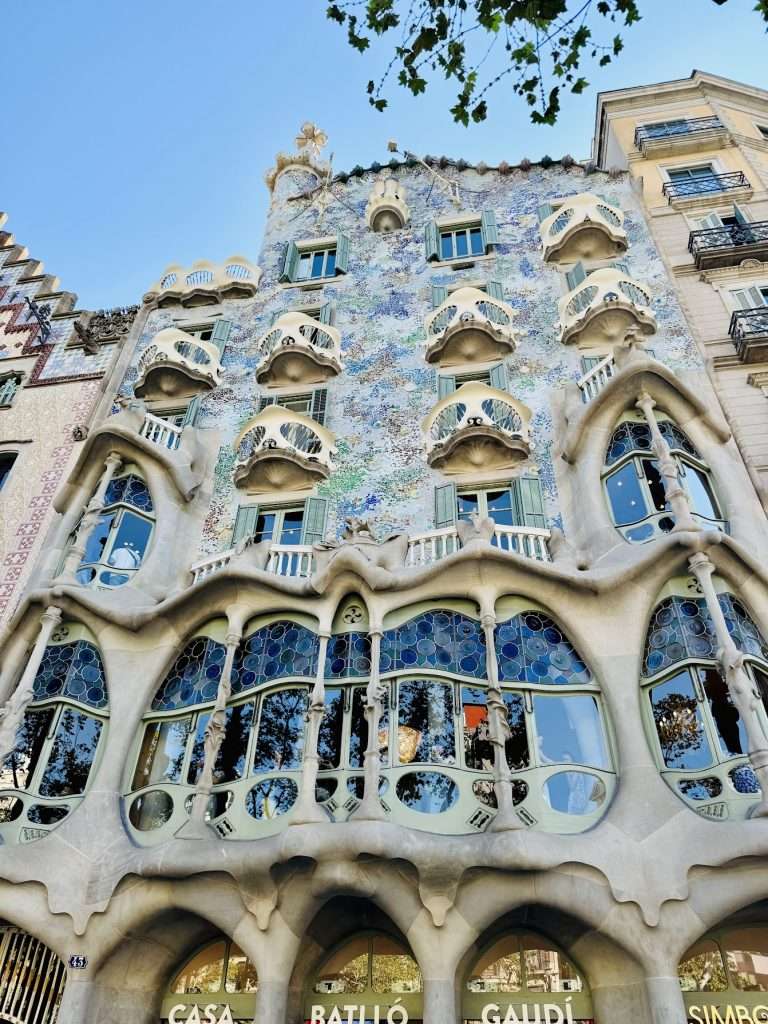
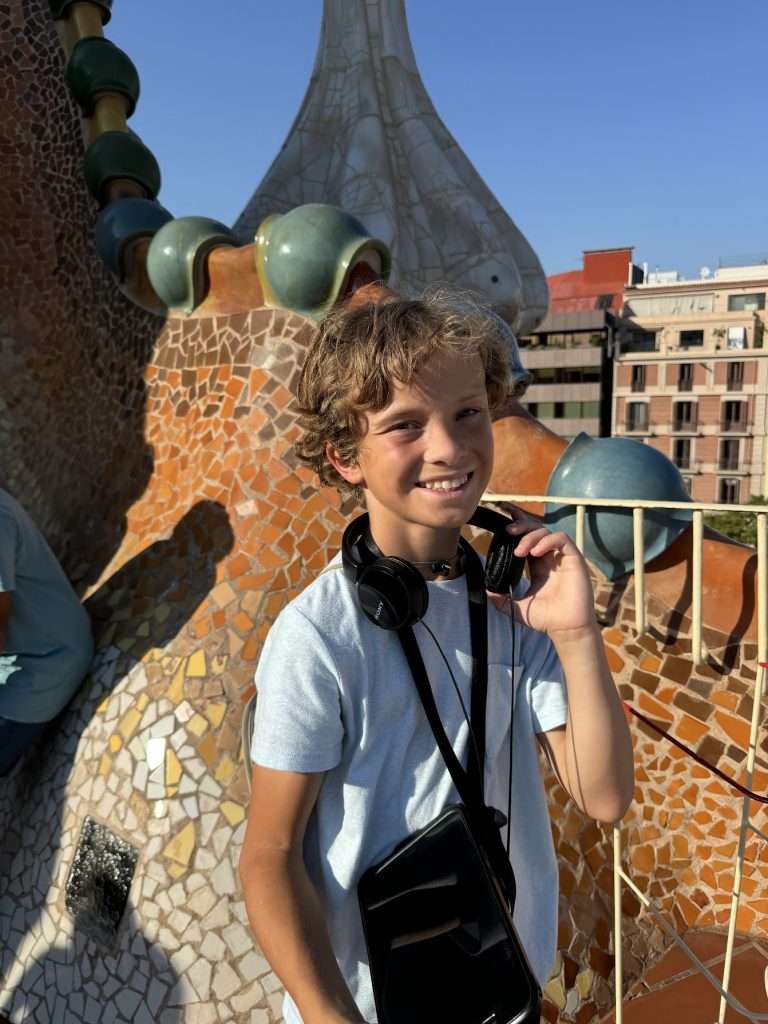
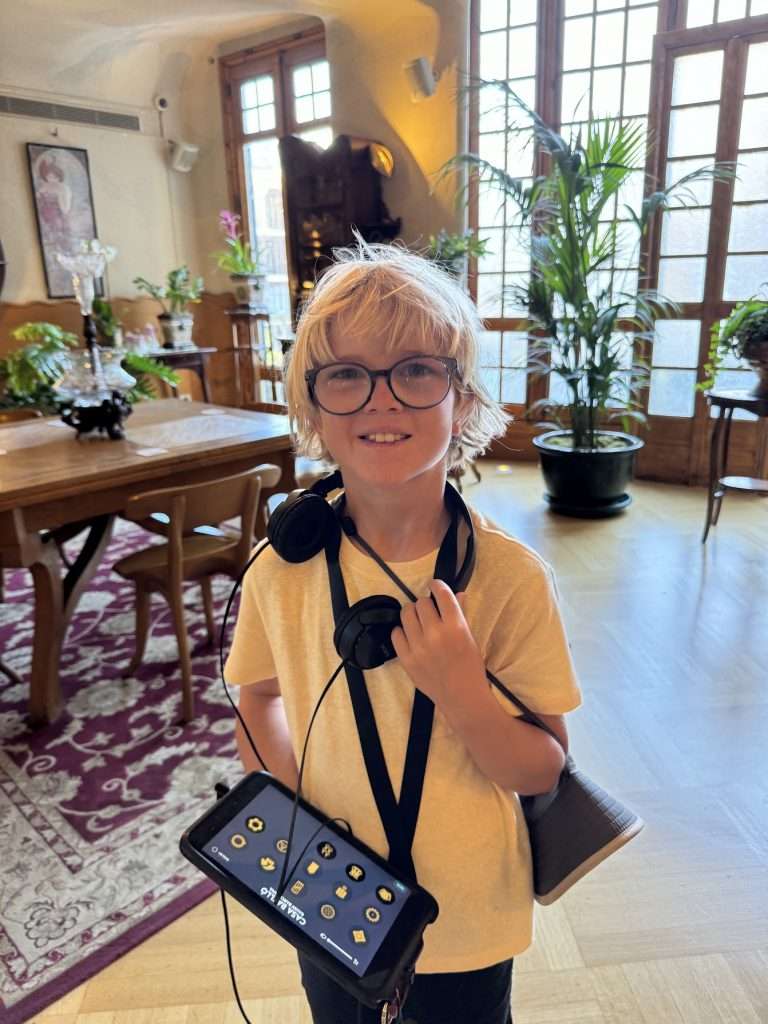
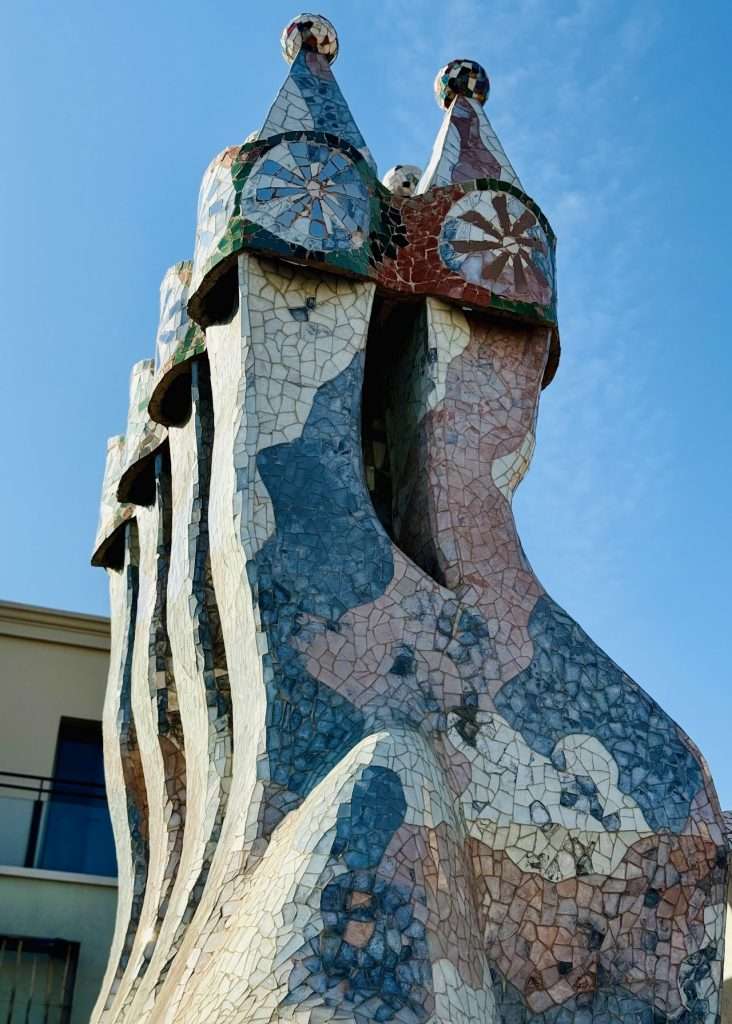

Before heading out of Barcelona, we made a final stop at a the Tablao de Carmen Flamenco Show for dinner and dancing. (more culture) There was a lot of passion put into the dancing, so while it was not exactly the boys favorite activity, it gave us something to remember. The food was only so-so.
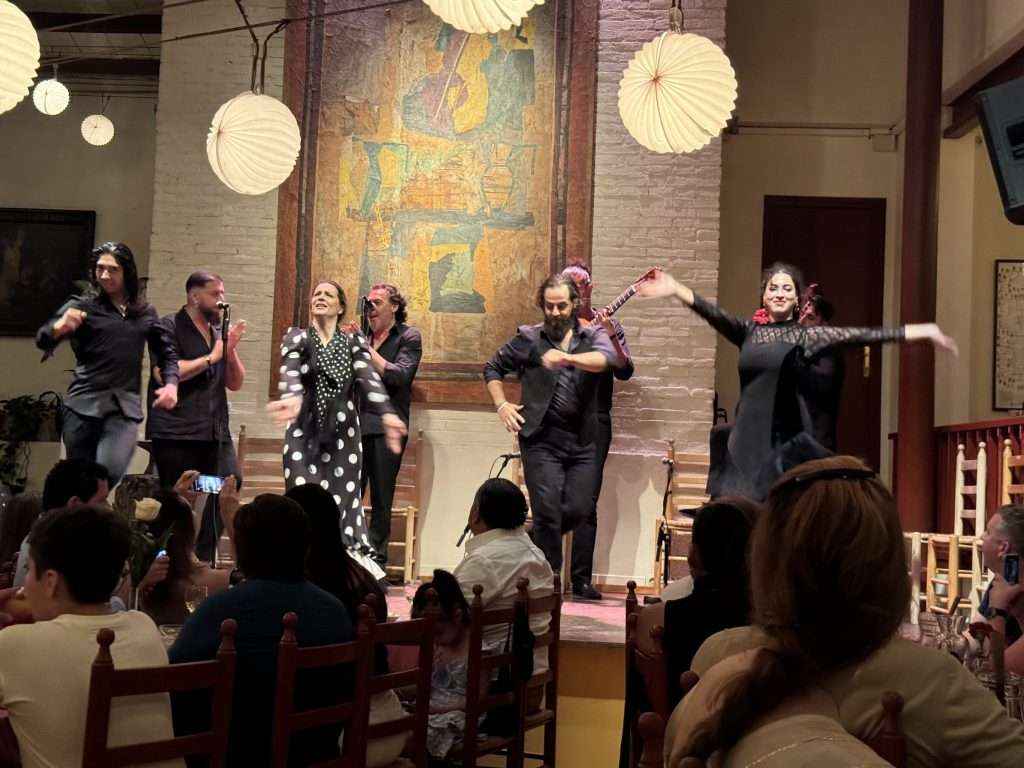
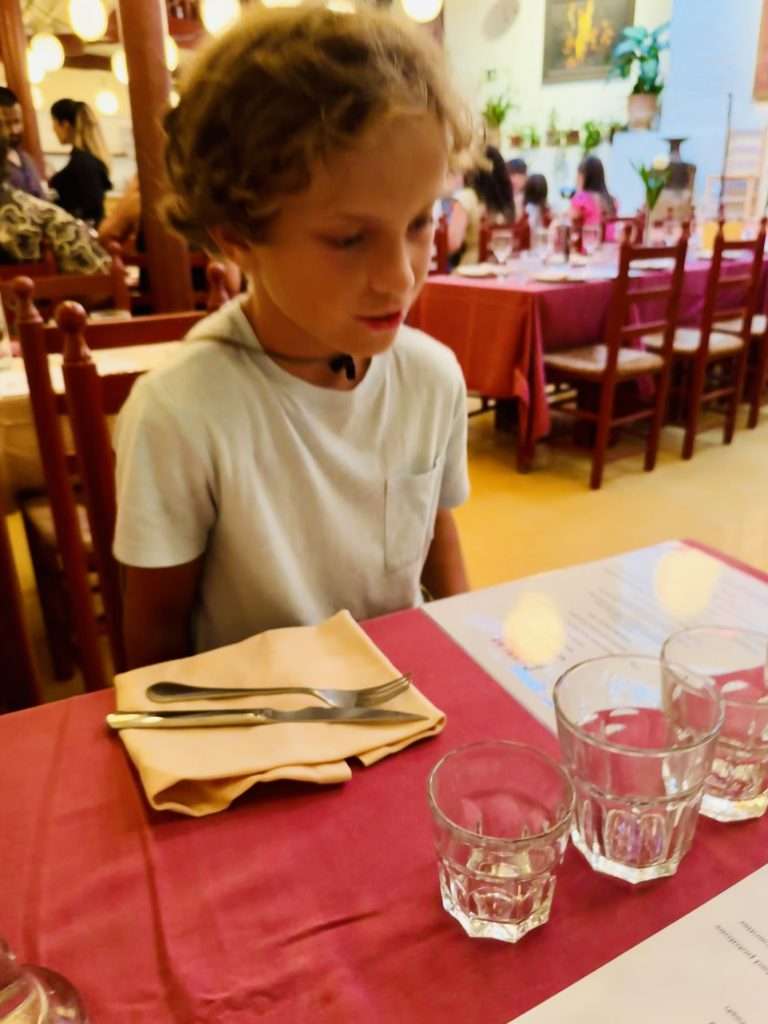
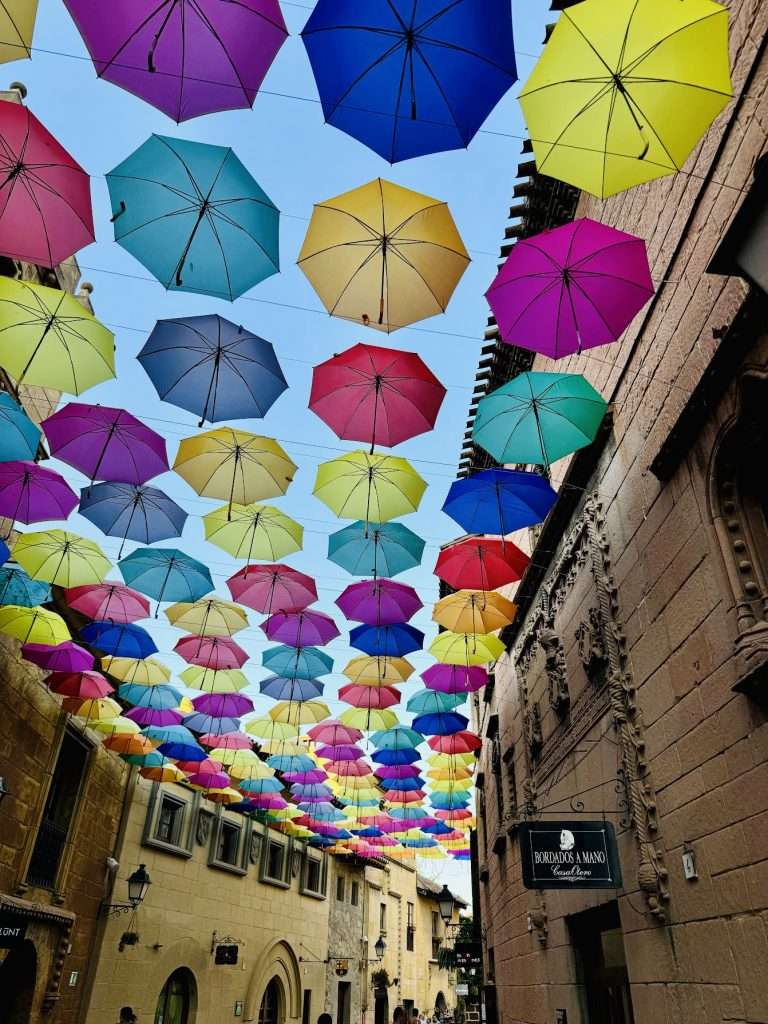
Montserrat, Spain
The hotel we stayed in, Hotel Can Farres, outside of Montserrat in El Bruc, was amazing. We felt like we were in Napa, California, and basically the weather is near identical in the summer, so I guess we were! The boys loved the swimming pool and the free breakfast. Doug and I liked being able to stay away from a big city.
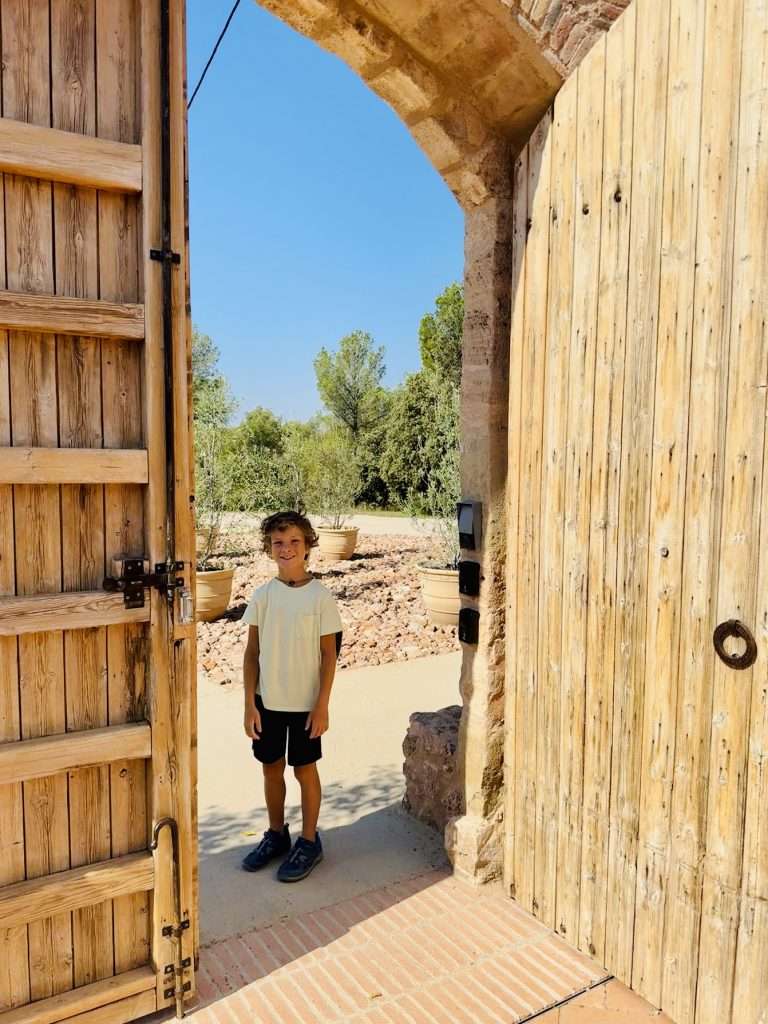
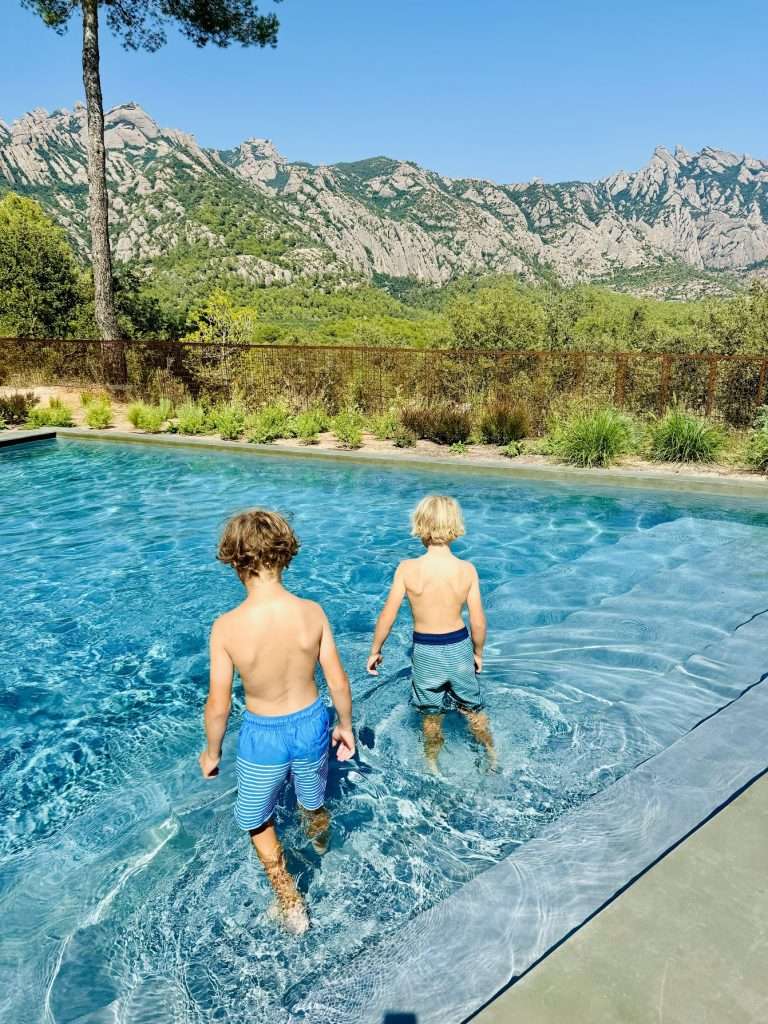
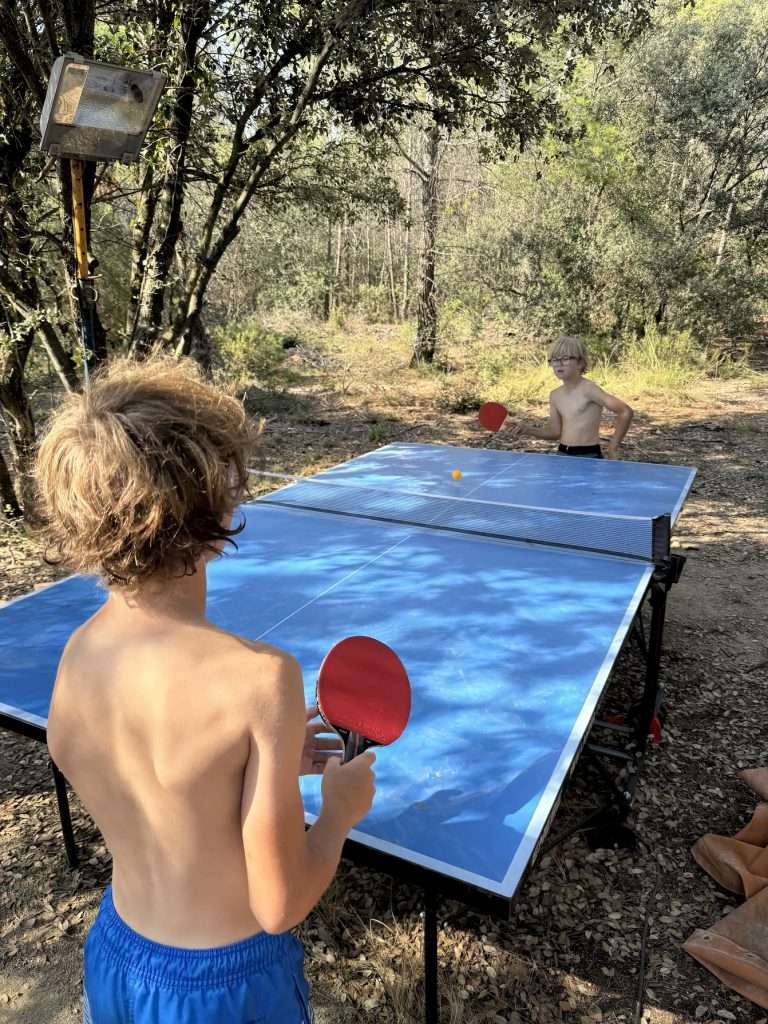
We were also only a short drive away from Parc Natural de la Muntanya de Montserrat. Montserrat is an ancient Monastery nestled in the serrated cliffs of Catalonia. The name “Montserrat” literally means “serrated mountain”. Finding the trailhead can be a little tricky.
These are directions from the “Monistrol de Montserrat” train station, but we had to improvise as we had parked our car in town. Exit the train station and walk downhill towards Monistrol de Montserrat. Cross this bridge to the other side. The mountain range of Montserrat is looming in front of you. Once on the other side of the bridge, cross the street, and continue on the wide sidewalk into town. The sidewalk ends at a small plaza in town. Walk through the plaza, keeping the mountains to your left. You will see a staircase off to the left. Take this to the road above you. Red, white, and green painted stripes mark the trail all the way up to the monastery. As long as you follow these stripes you are going in the right direction. From the top of the staircase, turn left and walk along the road. After walking approximately 100 meters on the road you will arrive at the trailhead.
The day was warm, but we felt that the boys needed to get their energy out, so chose to hike it. You could also take a bus, or a funicular. The hike up took a little over an hour with water and snack stops. By the time we made it to the top we were all pretty sweaty, but the view was incredible. There were a ton of people at the Monastery, and we passed only a handful on the trail, so clearly the bus and the funicular are both popular alternatives.
After making our way back down, the rest of the day was spent at the pool.
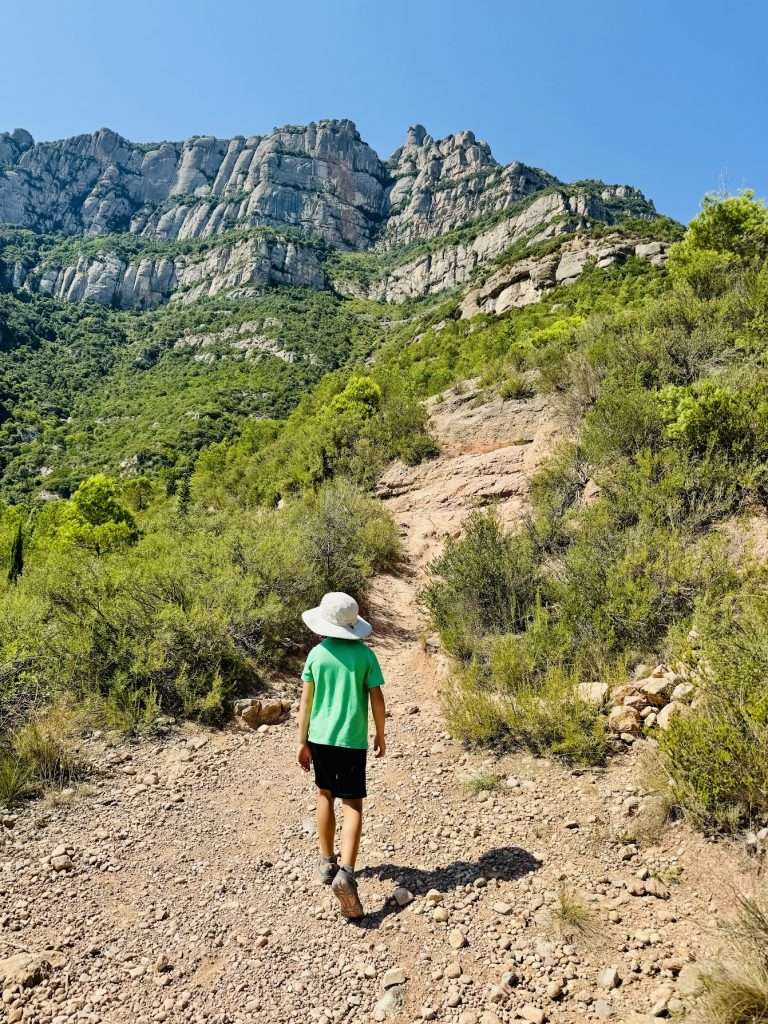
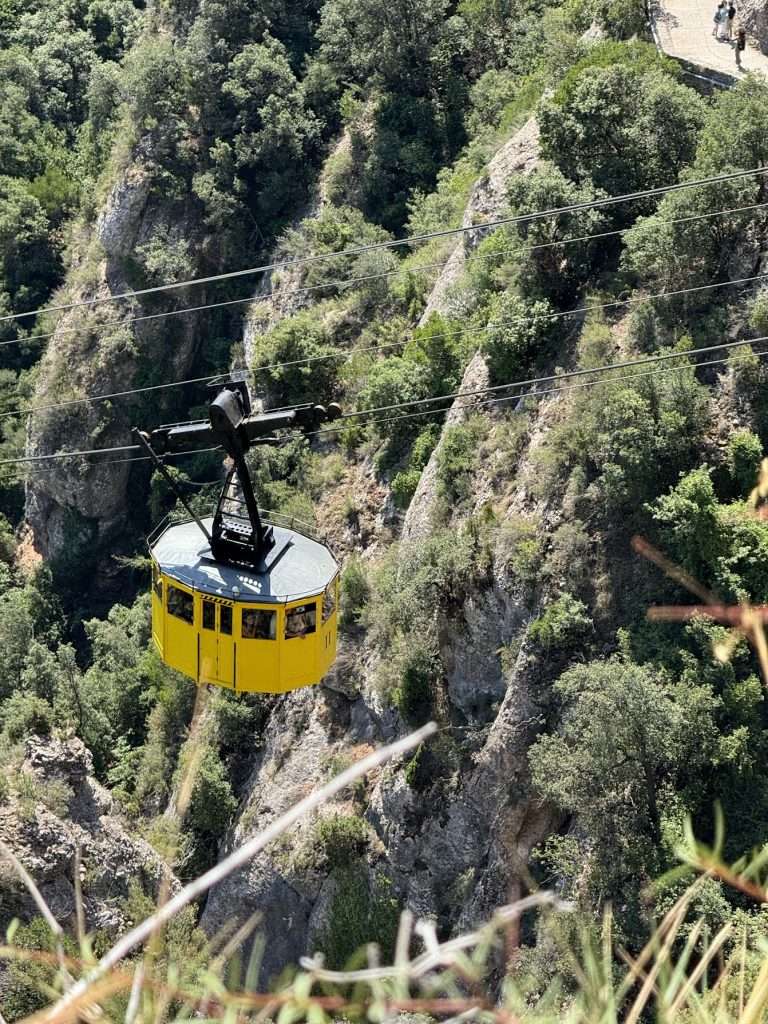
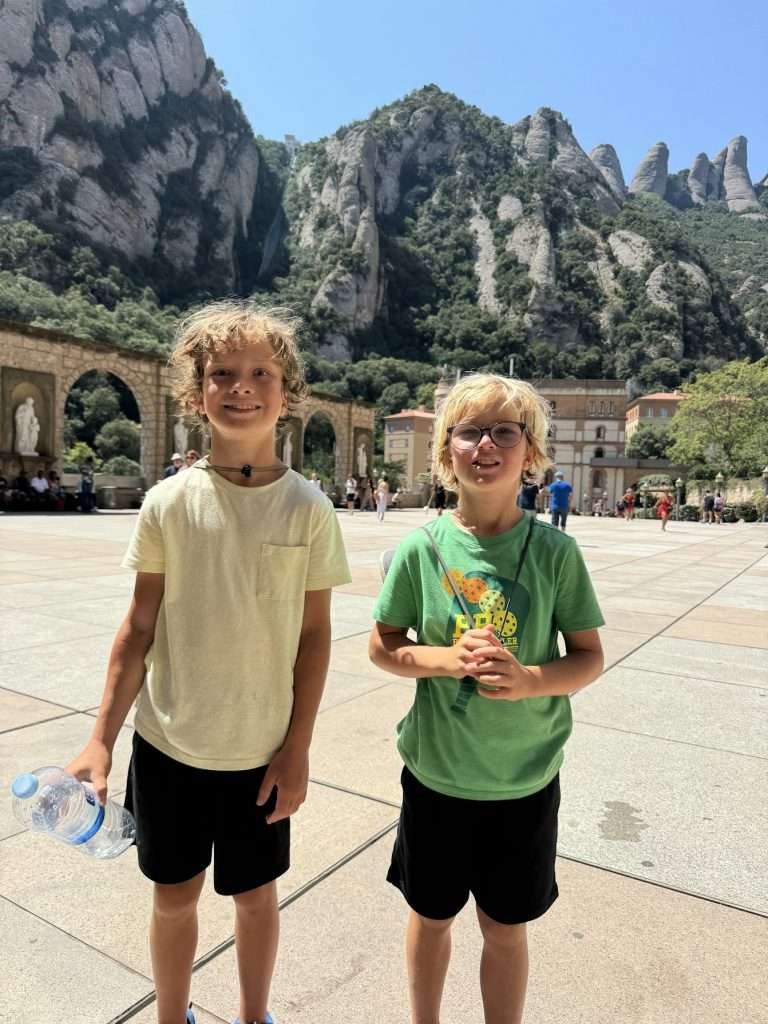

Madrid, Spain
The drive from El Bruc to Madrid took us about six hours. We arrived in the late afternoon and checked into our hotel, the Hyatt Gran Vic Central. The room was unique, but clean and air conditioned. We enjoyed a welcome drink on the rooftop bar and then headed into Madrid to explore. Admittedly we were all pretty tired by now, so our exploration was limited. All we really saw was the Royal Palace of Madrid. Before we checked out, we did some shopping, and then were off to the airport for the most disastrous flight home ever.
Never fly Iberia. We were delayed several hours in Madrid, which, of course, wasn’t their fault. Then missed our connection in Dallas because the Iberia team would not provide connecting boarding passes. We spent the night on a bench at DFW. We made it home the next day, but our checked luggage randomly showed up at our doorstep 3 weeks later!
